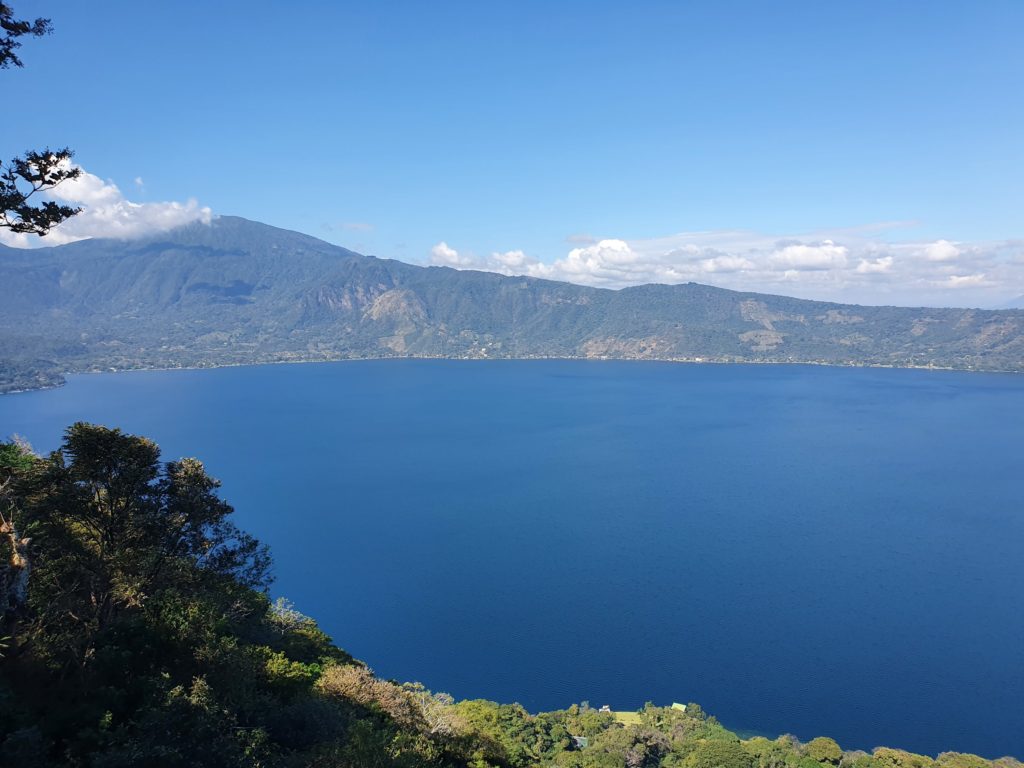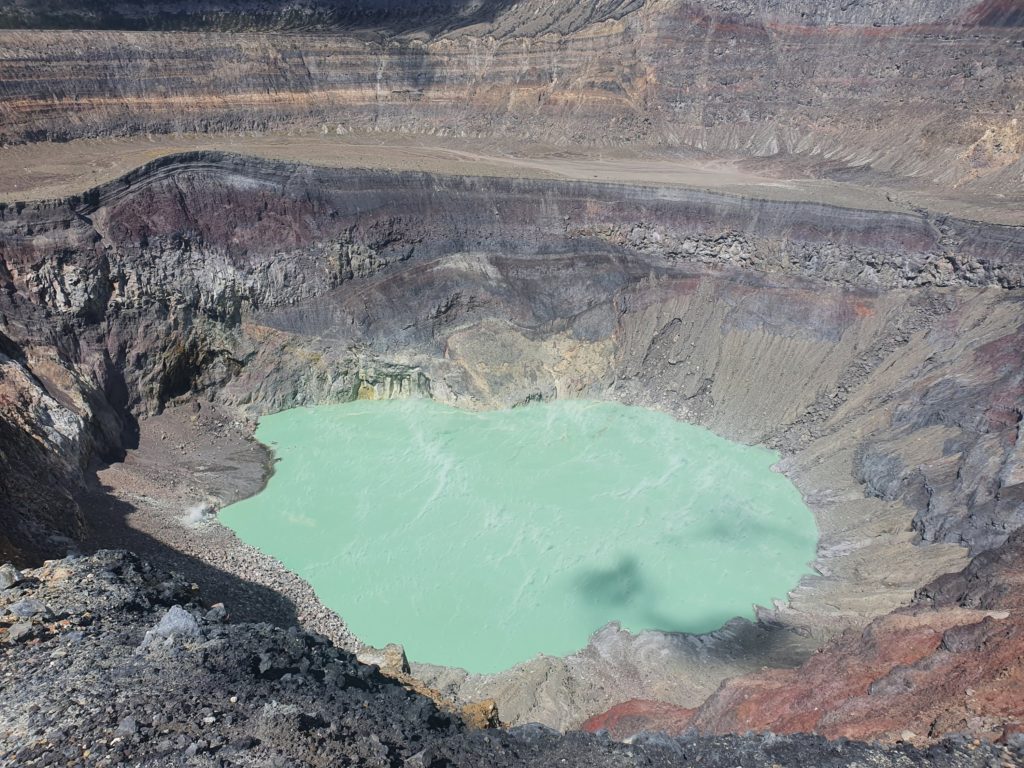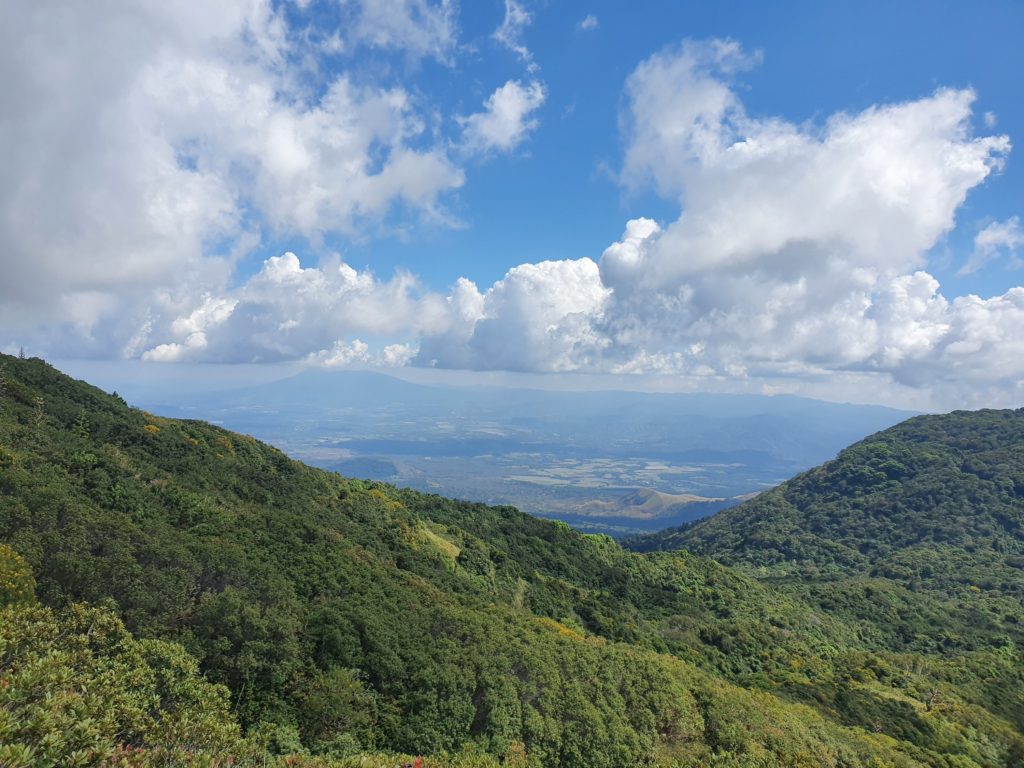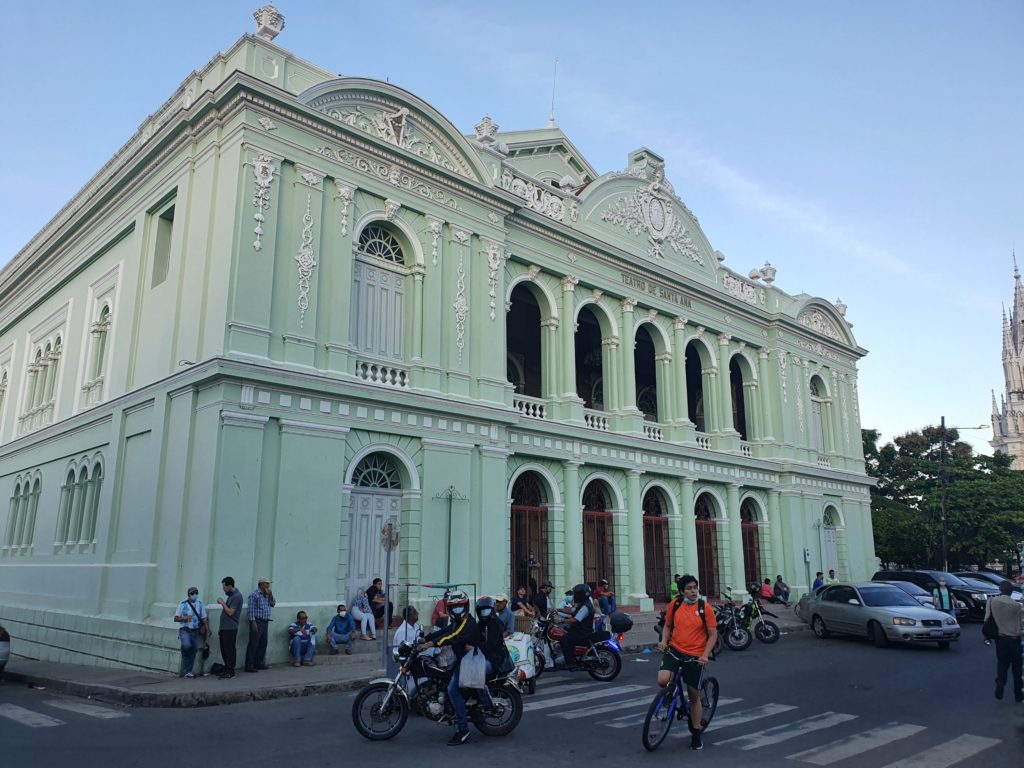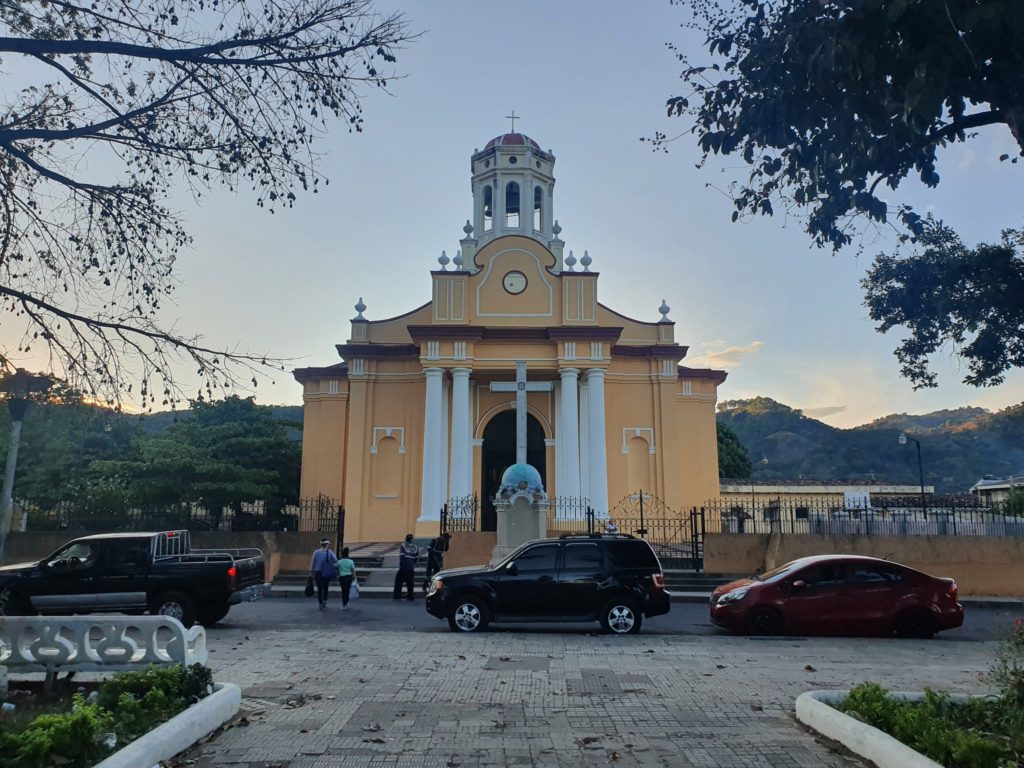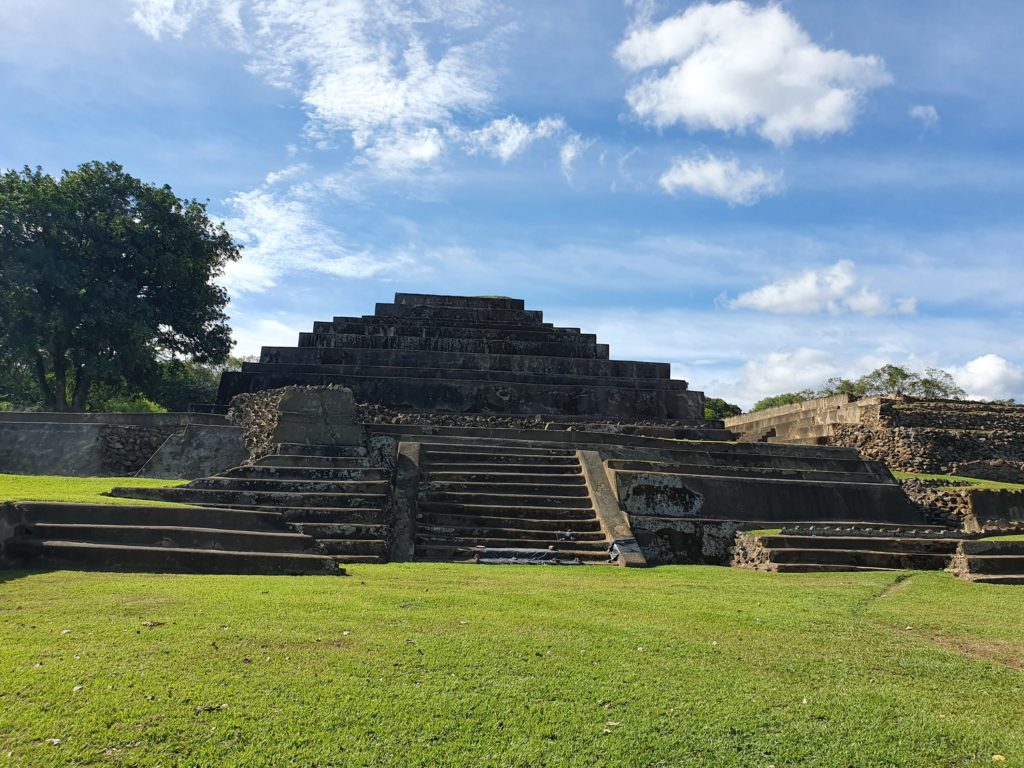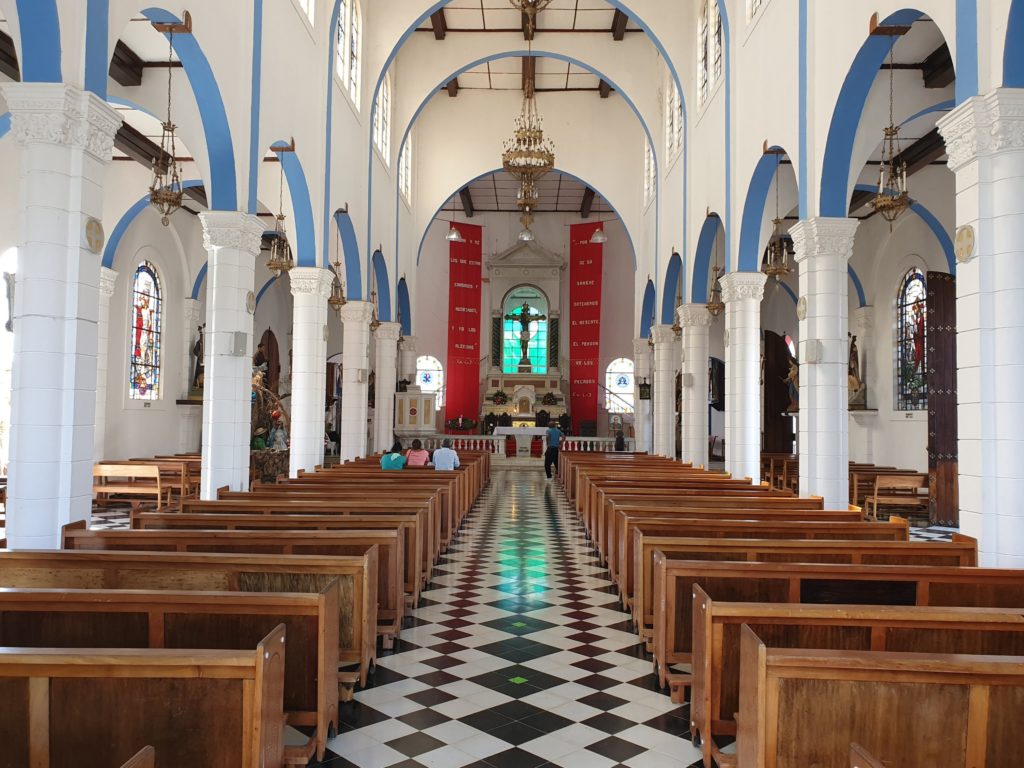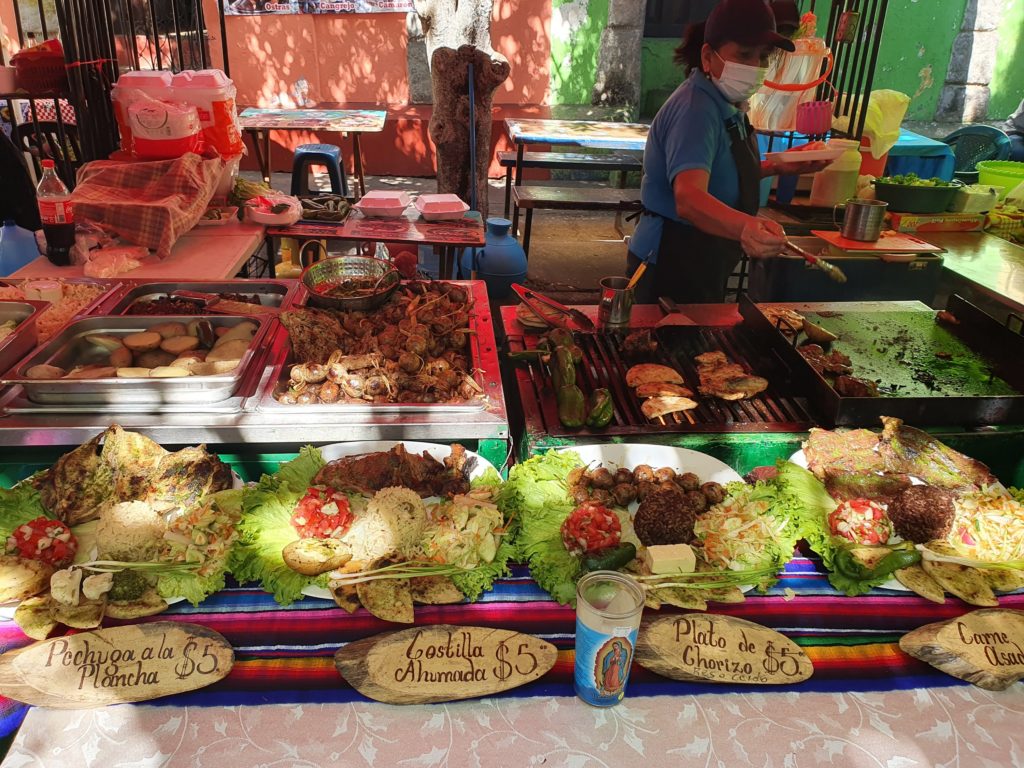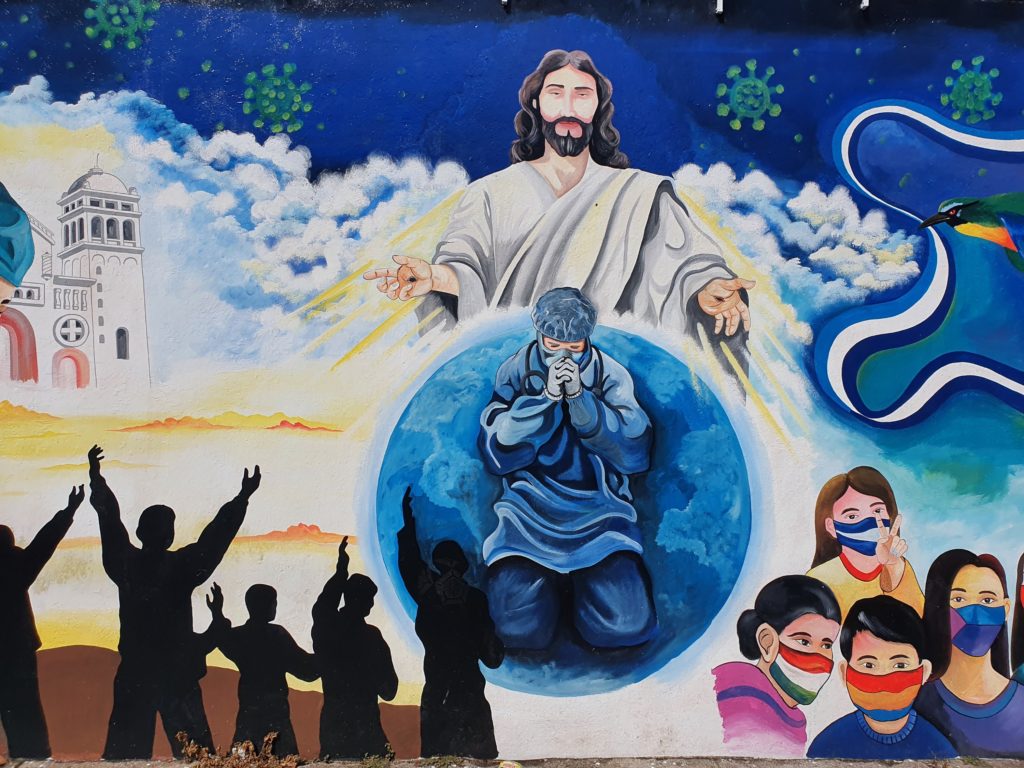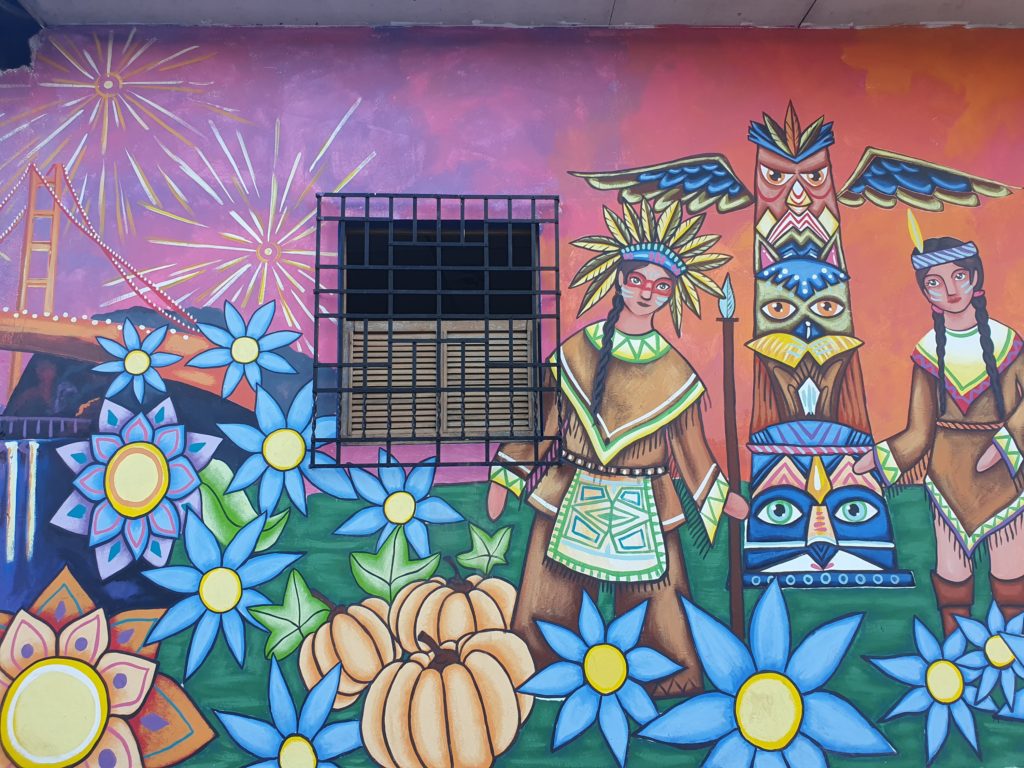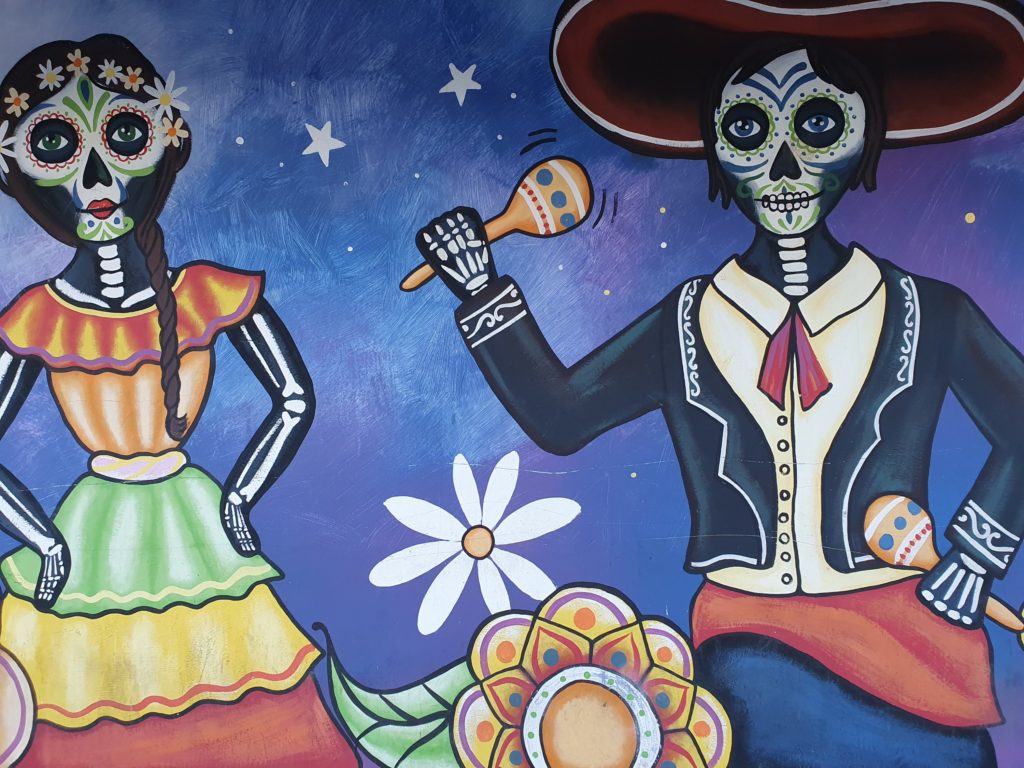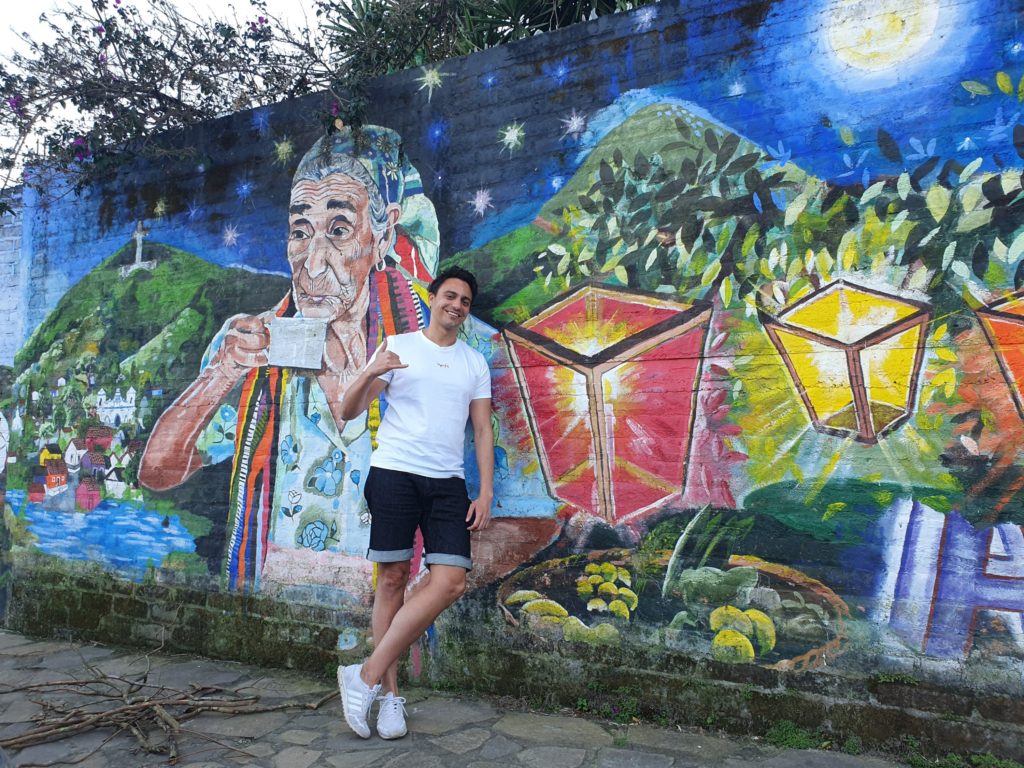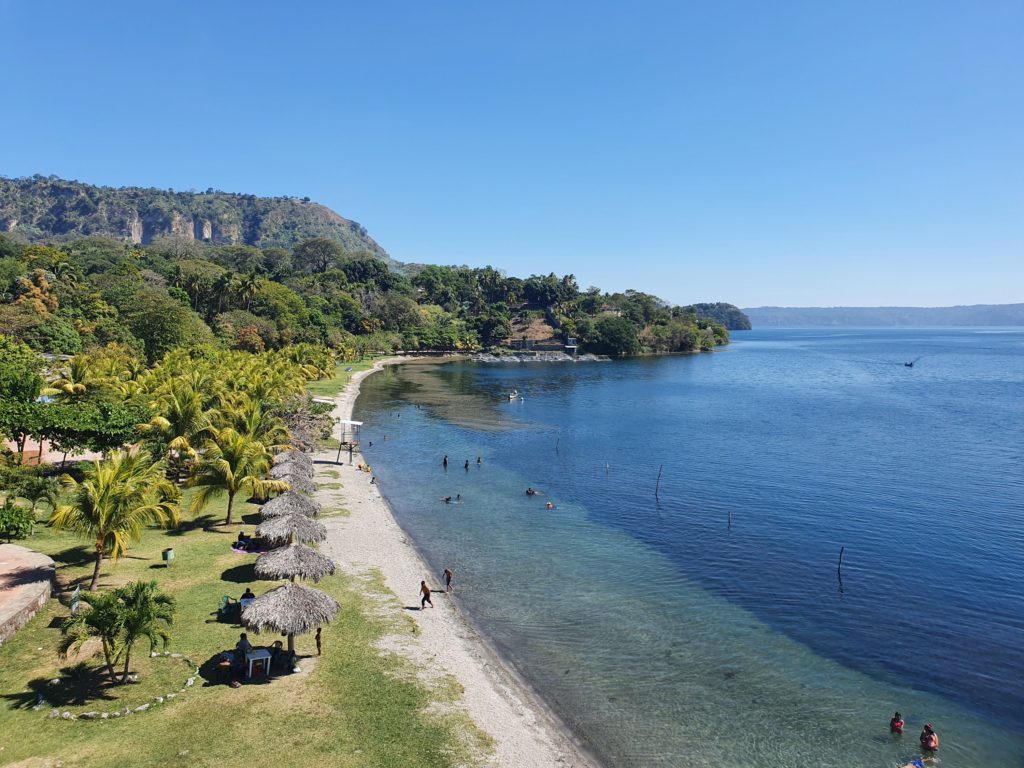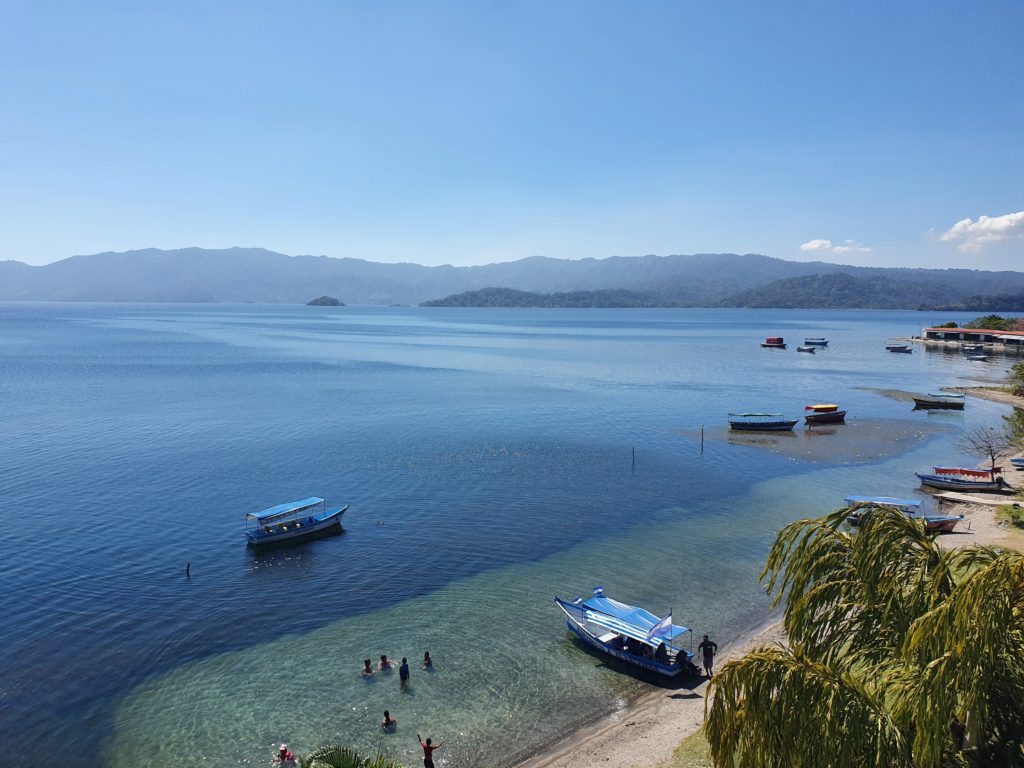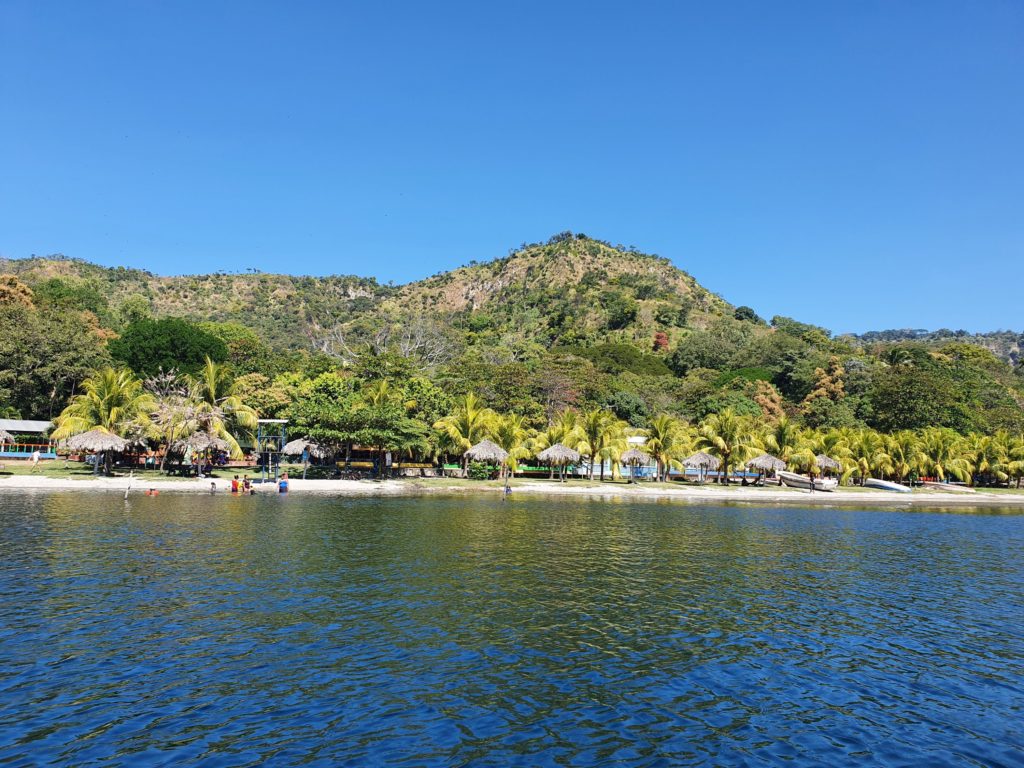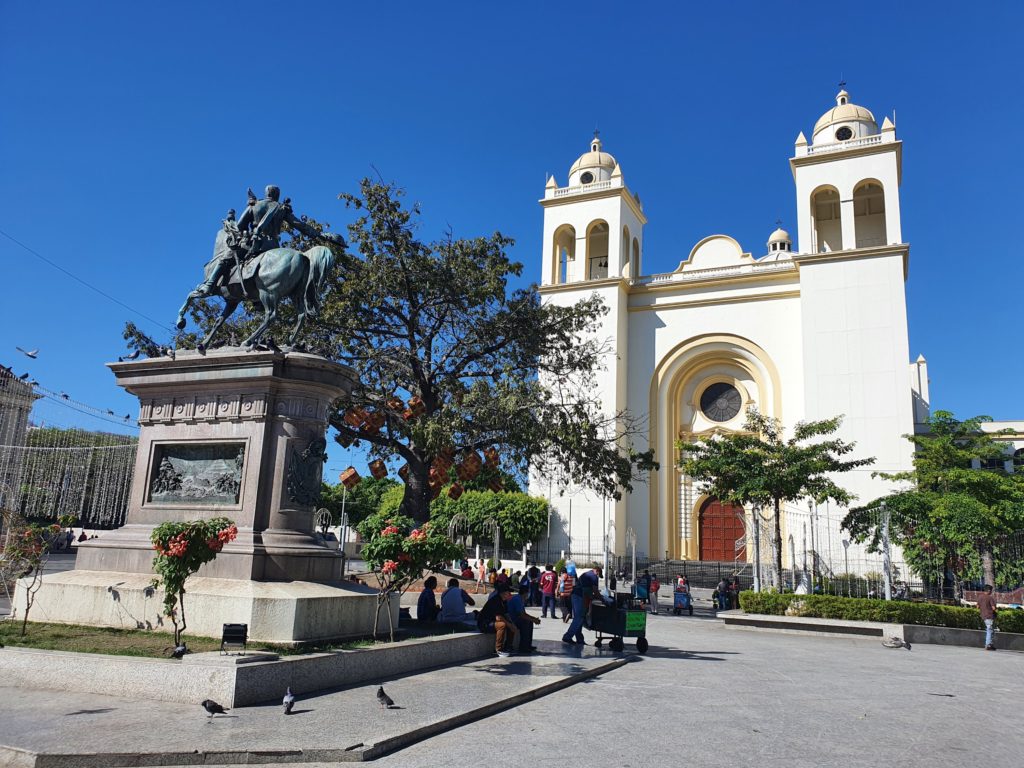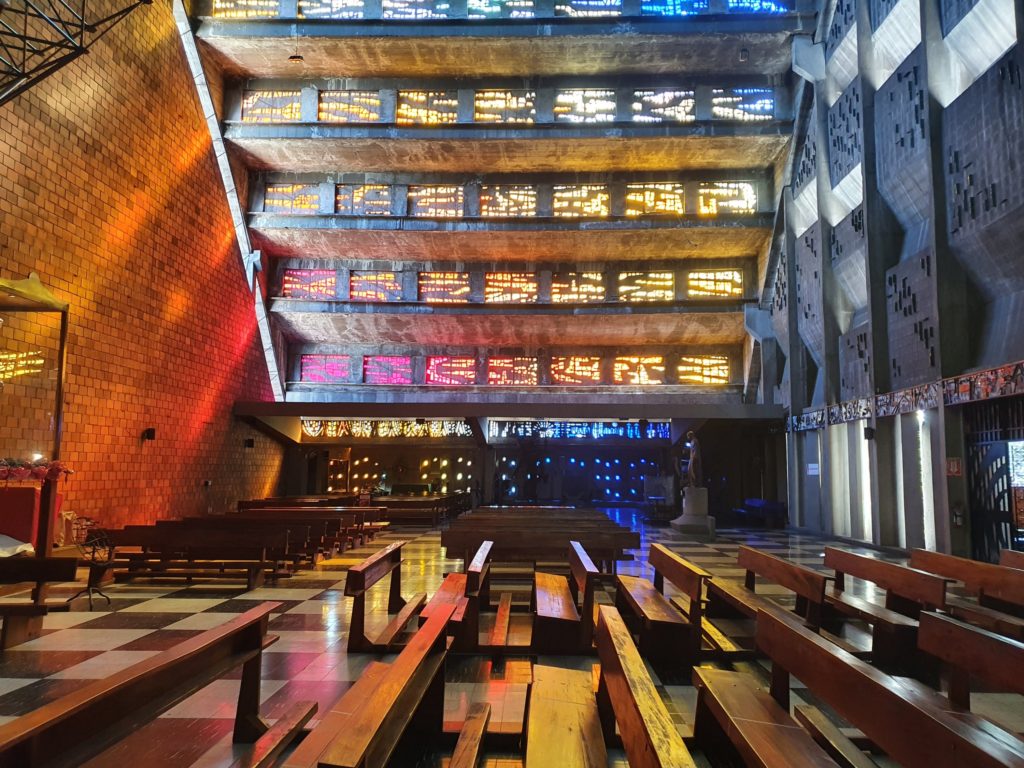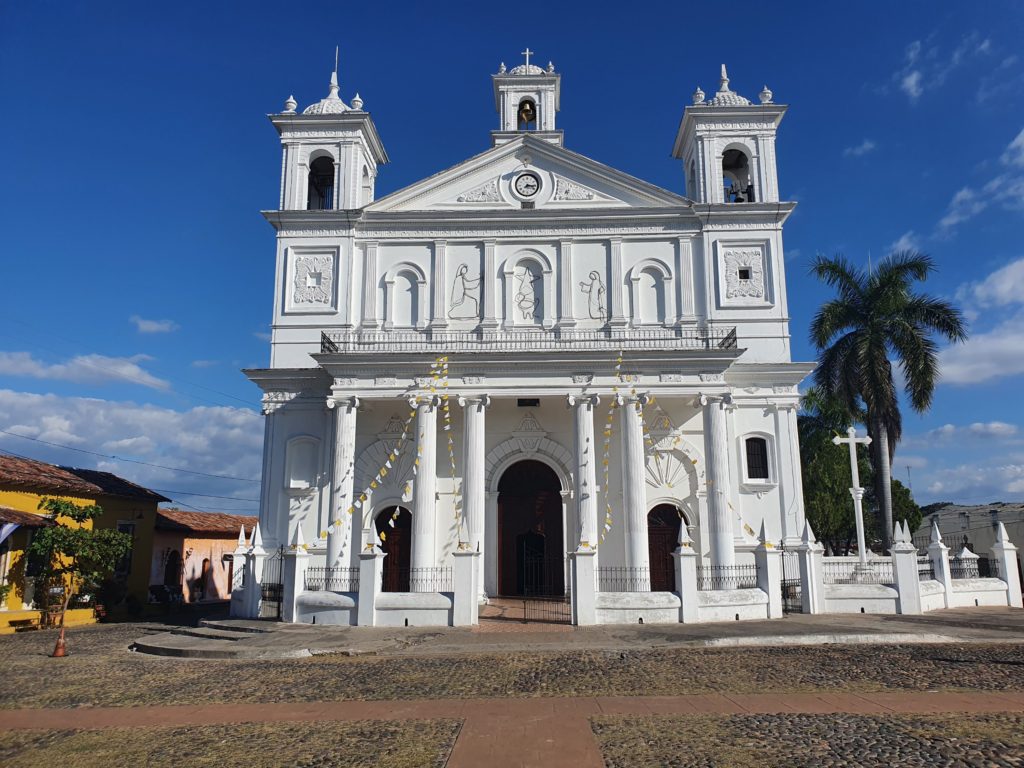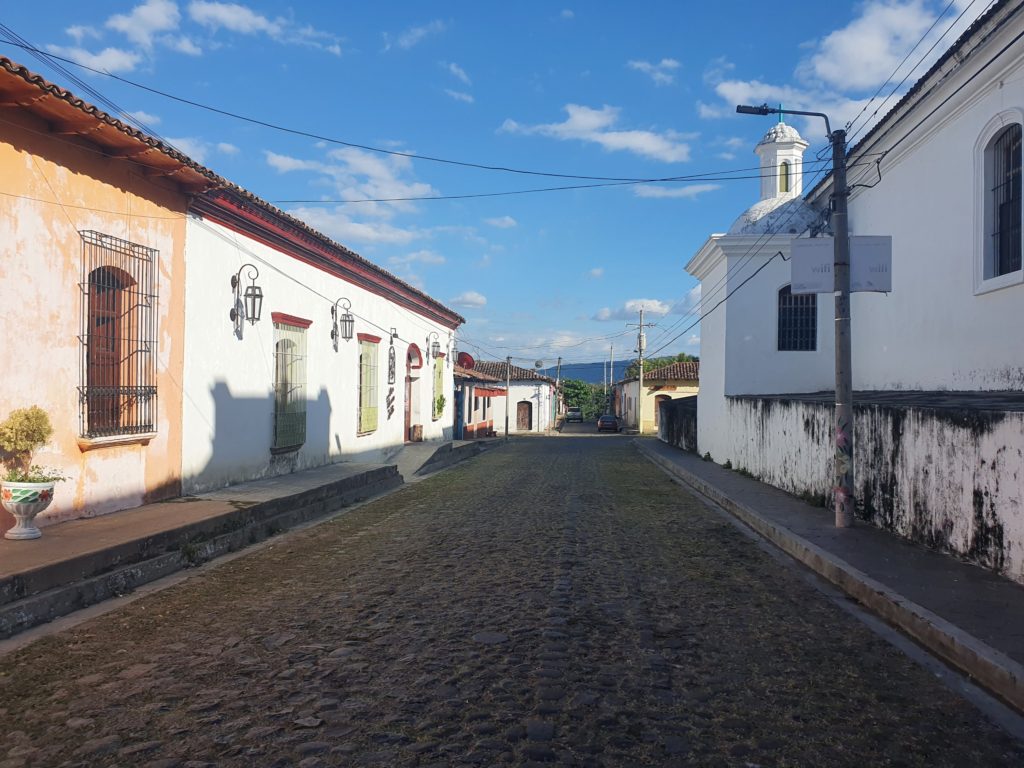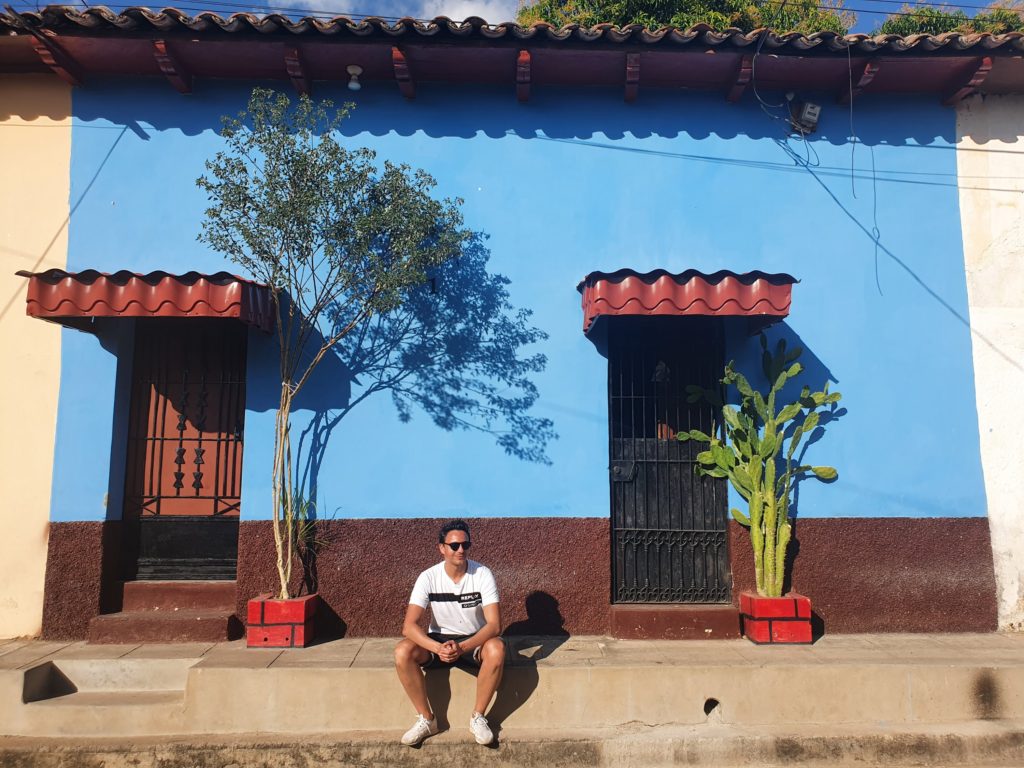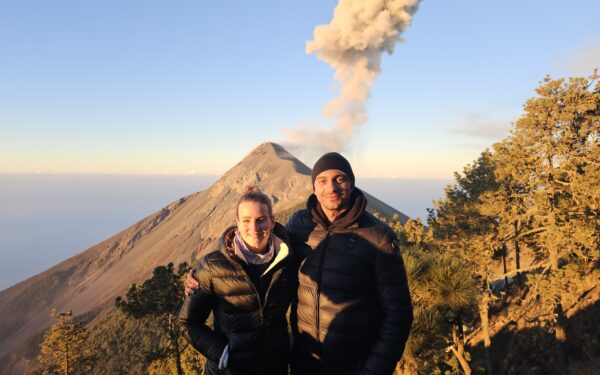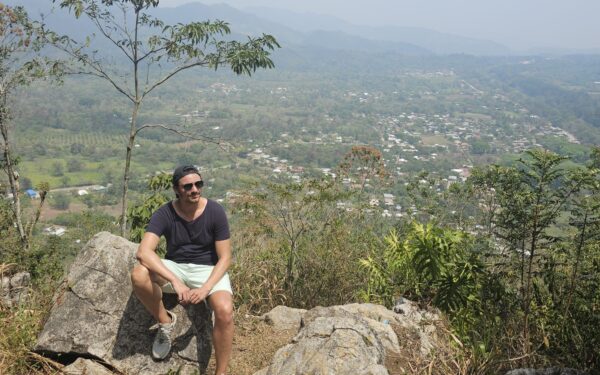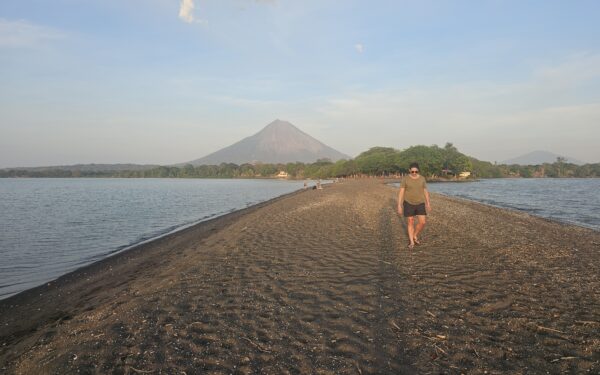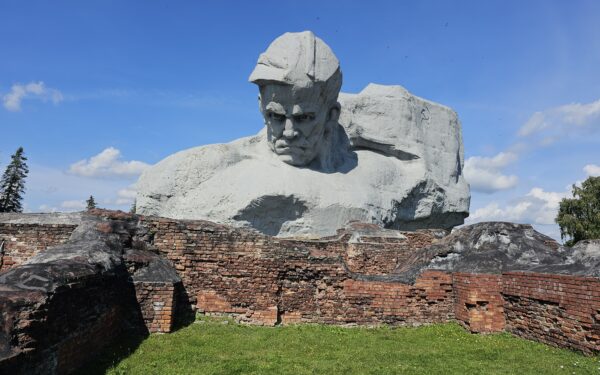Trip Report: El Salvador
Visited in January 2021
The first thing most people associate with El Salvador is probably tattooed gang members and inhumane prisons that Western television reports on every now and then. The sad truth is that El Salvador has the highest murder rate in the world and is sometimes called the most dangerous country in the world, except for those in a state of war.
That might be the main reason why El Salvador does not attract a large mass of tourists like Costa Rica or Guatemala. In fact, the first thing many people I told about my trip to El Salvador asked was if it wasn’t way too dangerous. The answer is no. I spent four full days and two half days in this country and realized that it is no more dangerous than most of the countries in Latin America I have been to.
I will explain the reasons for this at the end of this article. Before that, I would like to give you an overview of what I saw and experienced in the smallest country of Central America.
My El Salvador itinerary
What does El Salvador offer for tourists? A lot! The country has, among other things, volcanoes, Mayan temples, colonial towns, national parks and beaches that are a paradise for surfers.
El Salvador is comparable in size to Israel or Slovenia. From west to east, it takes about five hours by car to cross the country. From north to south it is even only three hours. I chose El Salvador’s second largest city, Santa Ana, as my base for the first three nights, and the capital San Salvador for the last two nights. From there, I took day-trips to the places that interested me the most. Most of the time the travel time from one place to the other was only 30-60 minutes.
Besides, I booked a guide and a driver for my time in the country. Sure, it would have been possible to travel alone and book guided day-trips (such as the Ruta de las Flores or Suchitoto). The reason why I decided to book a guide for all my days in El Salvador was not the security situation but because the guided tour was only slightly more expensive than if I would have traveled alone. Therefore, I thought it was more convenient to have someone organizing everything for me instead of doing it by myself.
The tour operator I used was EC Tours El Salvador and they charged $540 for the four days plus the two transfers from the airport to the hotel and vice versa. It was more than worth it, because my guide Stefy turned out to be one of the best guides I ever had.
My activities in El Salvador
In four days I was able to see quite a lot in El Salvador: the Santa Ana Volcano, Lake Coatepeque, Santa Ana, the Mayan ruins site of Tazumal, the towns on the Ruta de las Flores, El Boquerón Volcano, San Salvador, Lake Ilopango, Suchitoto and of course the beautiful landscapes we saw as we drove from one place to another.
Santa Ana volcano & Lake Coatepeque
Let’s start with the best, the Santa Ana volcano. For me it was the absolute highlight of El Salvador. El Salvador is a country with 23 volcanoes, six of them are active. I was able to see the crater of one of these six active volcanoes up close on my first day in El Salvador.
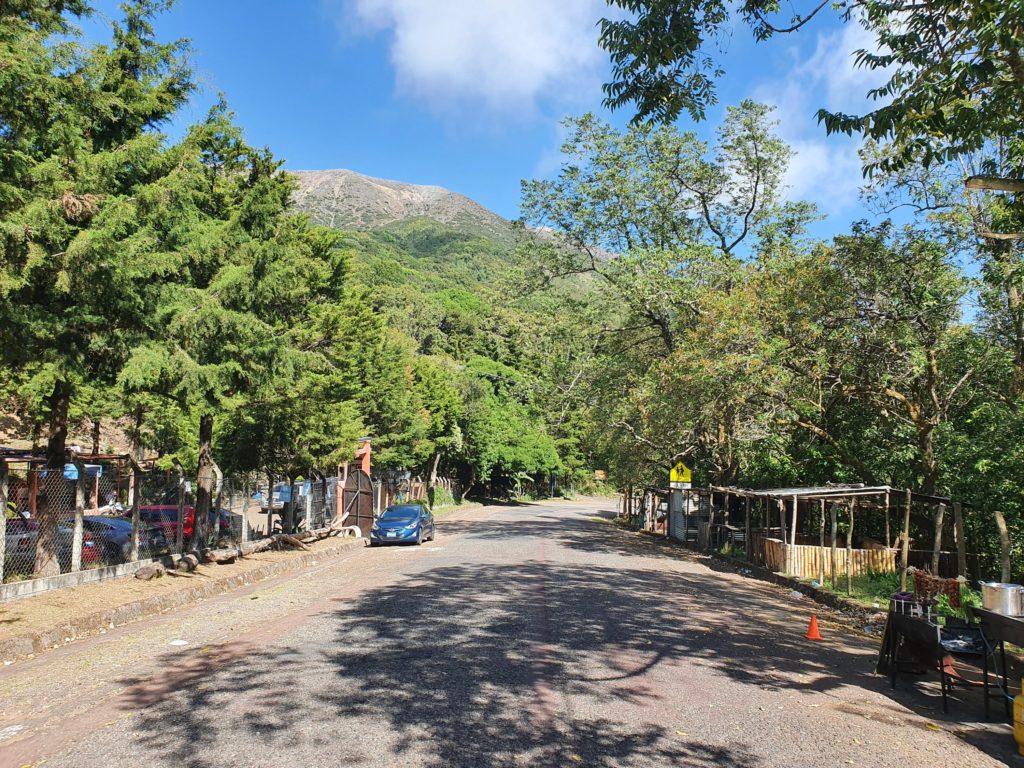
With its 2,381 meters Santa Ana is the tallest volcano in El Salvador. The hike up is relatively easy and takes about 90 minutes. Without knowing the exact number, I would estimate that you cover about 400 meters in altitude. The first hour of the hike is through the forest before the last half hour changes to rocky terrain. There are three viewpoints along the way where you can admire the beautiful nature of El Salvador.
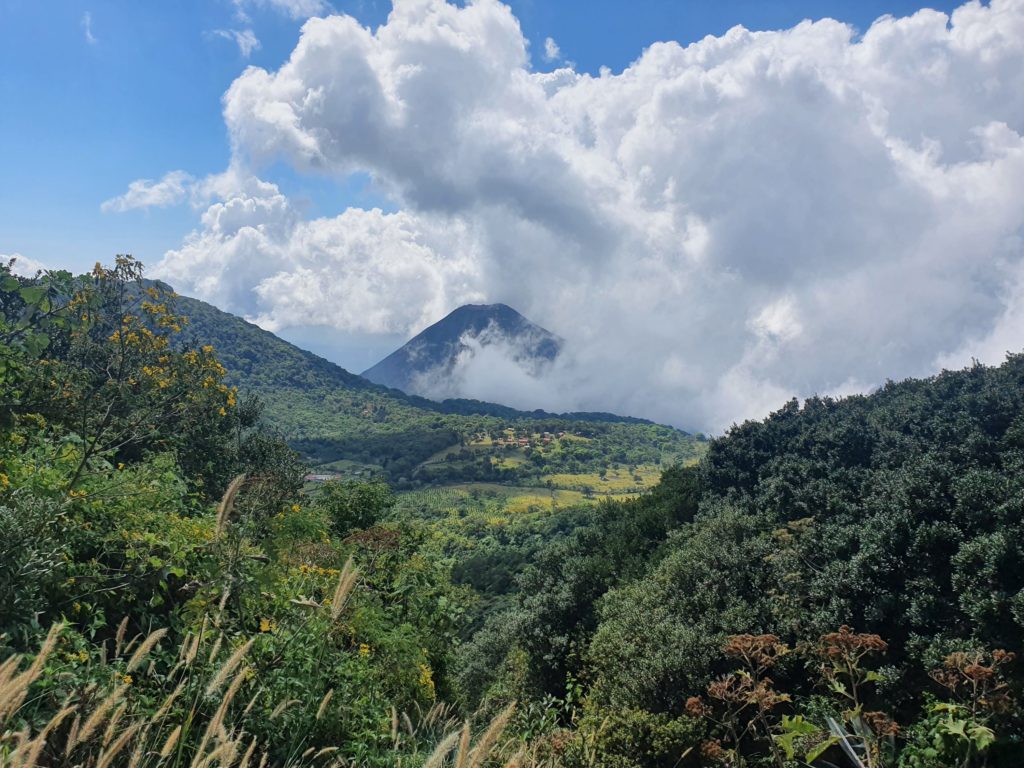
It was not so long ago when you could make this hike only as a group and accompanied by a police escort. The reason for this was that there were repeated robberies by residents of a village on the other side of the volcano. Since the volcano became a national park, the villagers lost access to the crater. For this reason, you can now do this hike alone and without police escort.
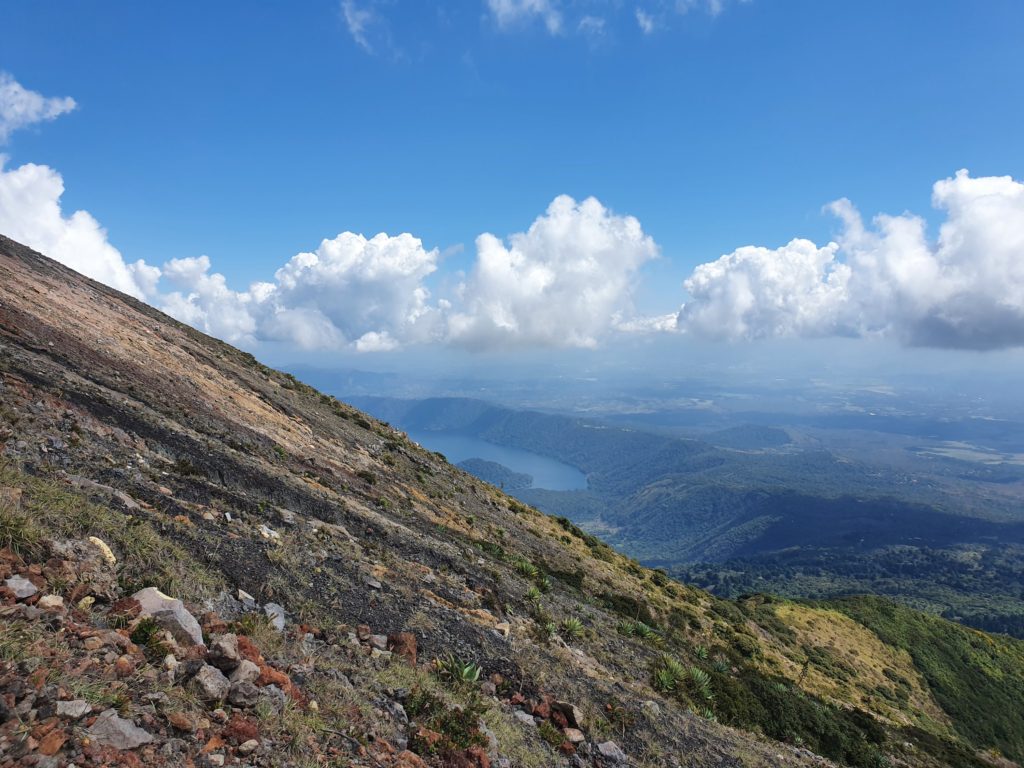
The closer you get to the crater, the stronger the sulfur smell becomes. Once at the top, you can then marvel at the boiling turquoise-green crater lake. In former times it was still possible to walk around the crater. In the meantime, this is prohibited, which is perhaps also related to the fact that accidents have occurred. An overconfident tourist wanted to perform a handstand on the crater rim in 2018. It took three days until his body could be recovered. Thus, today you are only allowed to walk up and down the crater rim for about 200 meters.
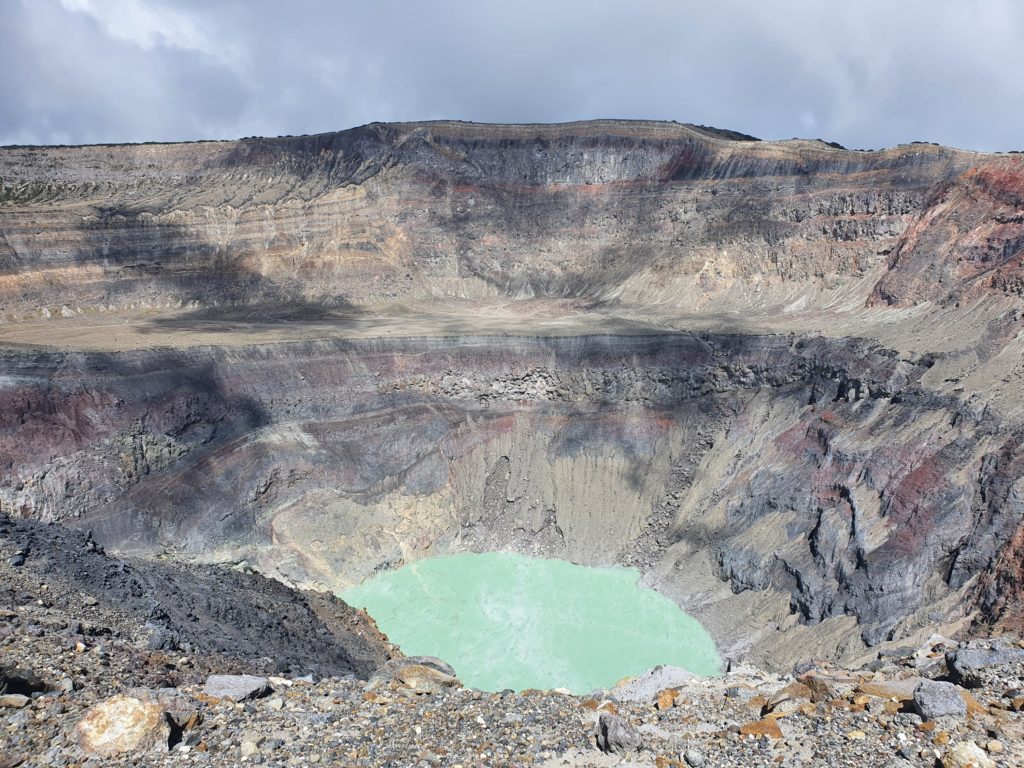
The Santa Ana Volcano was my absolute highlight in El Salvador. I would even go so far as to call this hike my best experience I’ve had in Central America so far.
Lake Coatepeque lies between Santa Ana and the Santa Ana Volcano, so you can visit both places in one day. Before the hike we made a short stop at a viewpoint where you can see the lake from above.
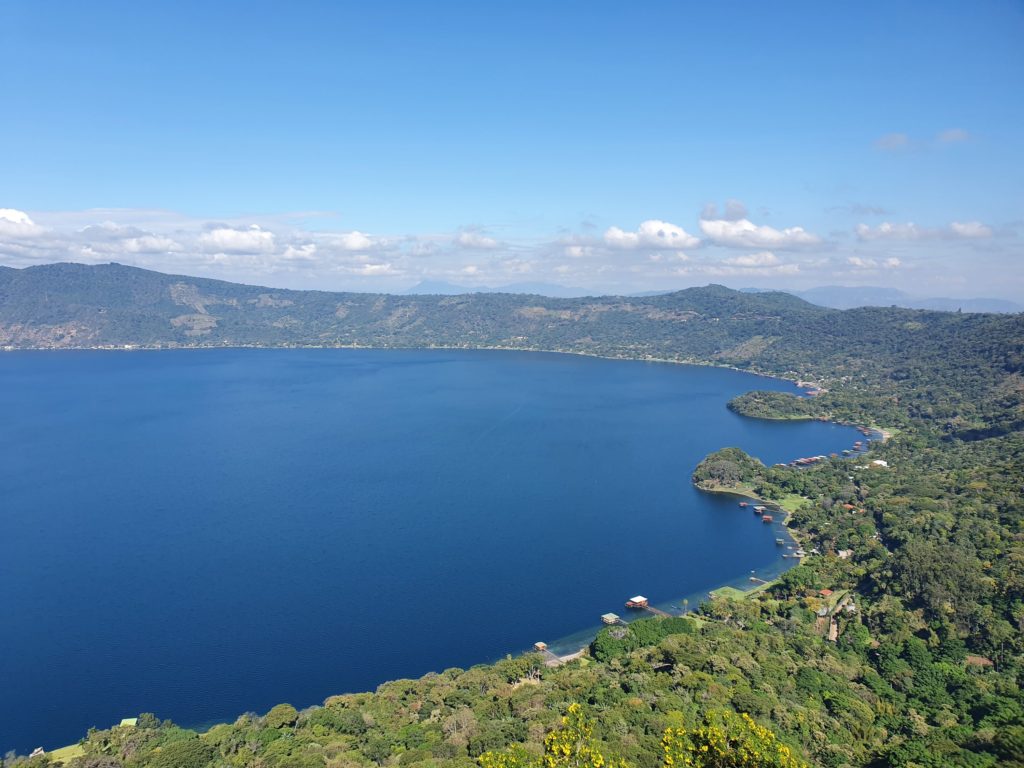
Legends say that long ago a snake with wings rose from the water and flew around the lake. The indigenous people of El Salvador consequently named the lake as cōātepē, which means at the snake hill.
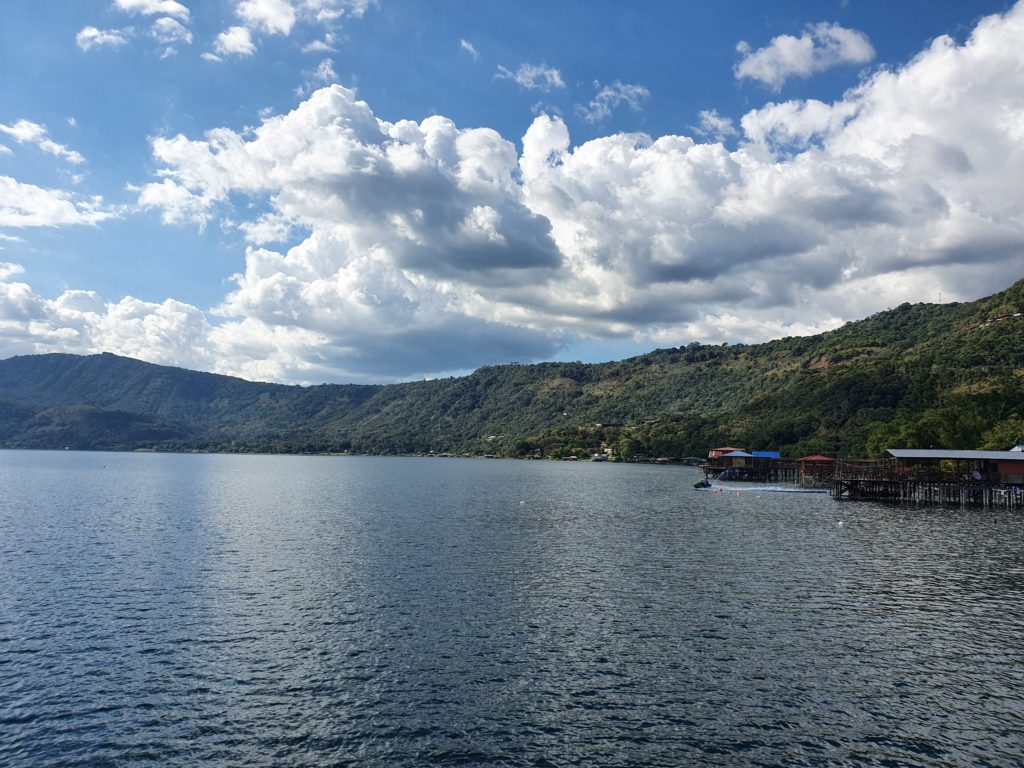
After the Santa Ana volcano hike, we had lunch on the lakeshore. Boat rides or jet skis are available, besides you can also swim in the water. It is a beautiful place and perfect to end the afternoon after the volcano hike.
Tazumal
Besides volcanoes and lakes, El Salvador possesses several Mayan sites. I must admit that these sites were not the highest priority for me, but since Tazumal was on the way to the Ruta de las Flores, we made a stop there.
Currently, several Maye sites are closed, either due to renovation or covid but we could visit Tazumal for half an hour. For historians this would probably have been unsatisfactory, for me it was quite enough. Even the fact that the associated museum was closed was no problem for me.
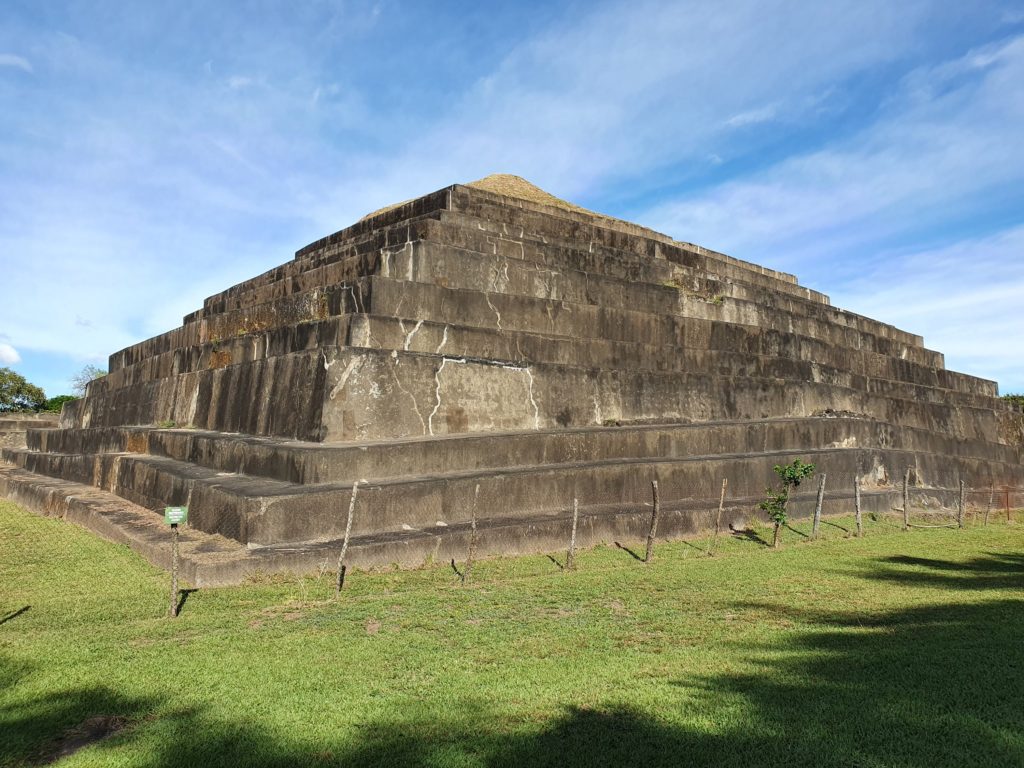
Tazumal is the largest Mayan temple in El Salvador. The structure may not come close to other Maya temples such as Chichén Itzá in Mexico or Tikal in Guatemala, but it is still an impressive monument.
Travelers interested in Mayan sites will be happy in El Salvador, as there are other ruins to discover besides Tazumal. Among them is Joya de Cerén, El Salvador’s only UNESCO World Heritage Site. In contrast to the temples, this is the only Mayan village still standing, where you can see how the Mayas lived at that time. There are even tours that cover all Maya sites in one day.
La Ruta de las Flores
The Ruta de las Flores is a 32km long route in the west of the country that passes through coffee plantations, colorful towns and roads decorated with wildflowers. It also gives you the opportunity to learn about the traditions, culture and history of El Salvador. On the Ruta de las Flores, travelers usually visit four to six towns. That sounds like a lot, but the driving time in between is usually only fifteen minutes or so. That’s why you will have enough time for all of them.
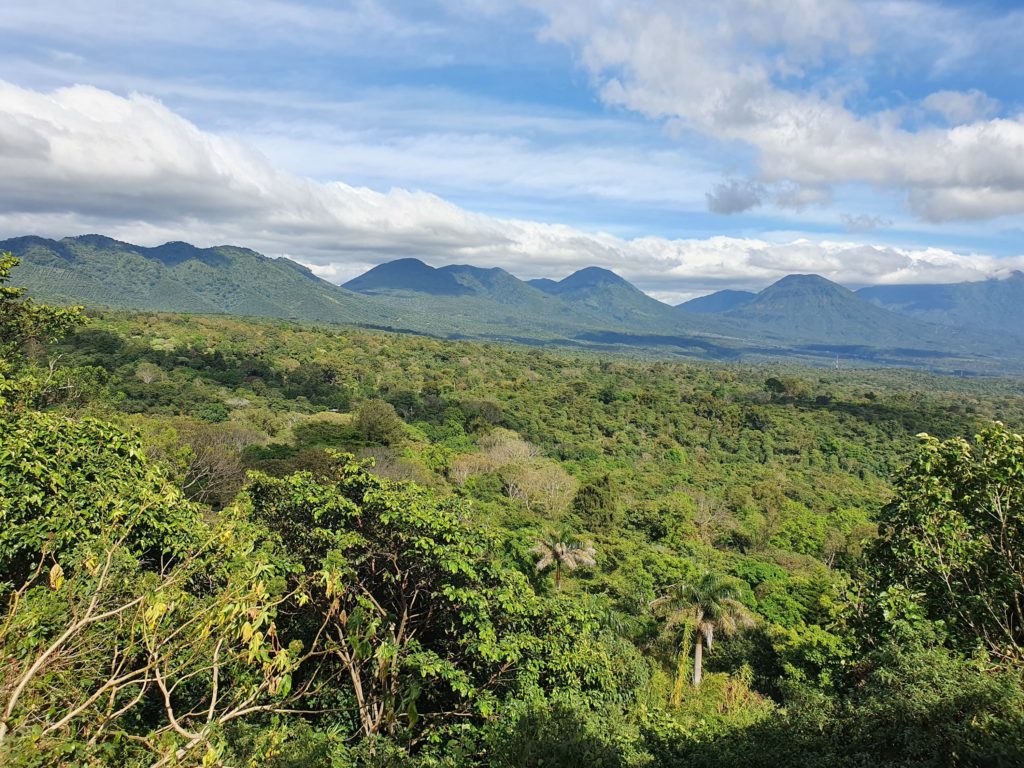
What I liked most on the Ruta de las Flores were the murals, which you can see en masse in some of the towns. Thus, these towns are transformed into small art galleries and the best thing is that they are free. Sometimes you even see murals by the same artist in different towns.
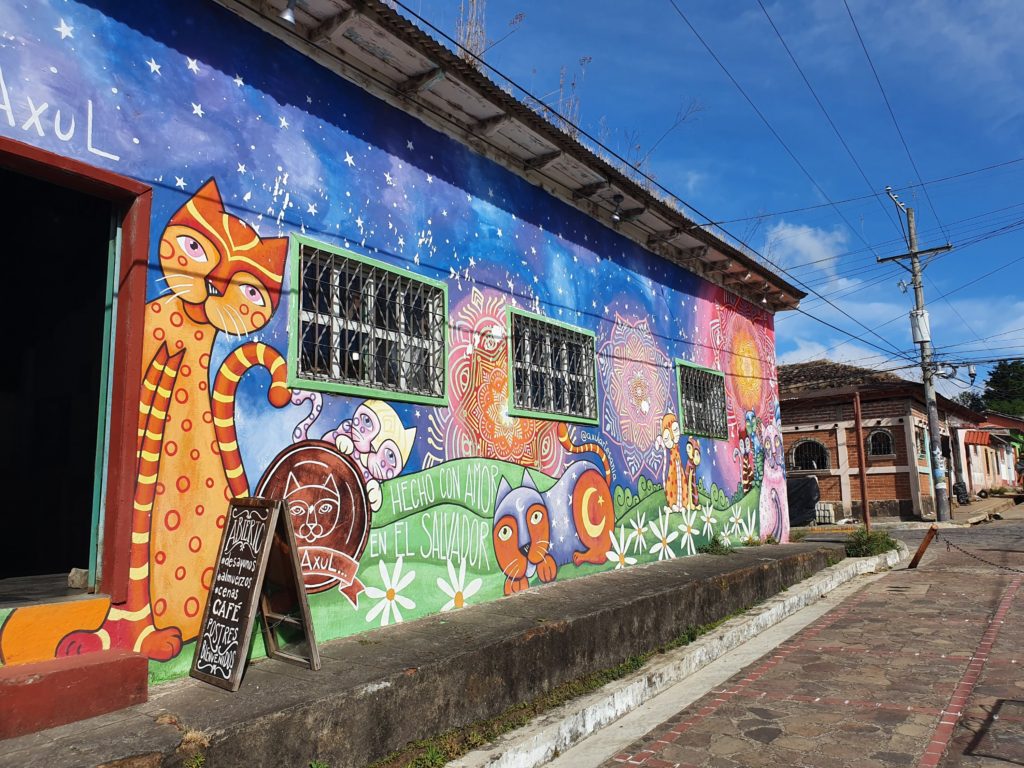
But not only the murals make these towns worth seeing. All the towns we visited were colonial towns with a main square that included a park and a beautiful church. By the way, if you do the Ruta de las Flores on a weekend, you can enjoy the food festival in Juyayua, one of the towns you visit. There you can find mainly local dishes for 4-6 dollars and they taste excellent.
You will also find plenty of coffee on the Ruta de las Flores. The export of coffee, together with the export of sugar cane, provides about half of El Salvador’s income. Therefore, it is not surprising that you will pass a coffee plantation every now and then. Most tours in El Salvador include coffee tasting, where you can try coffee from different beans.
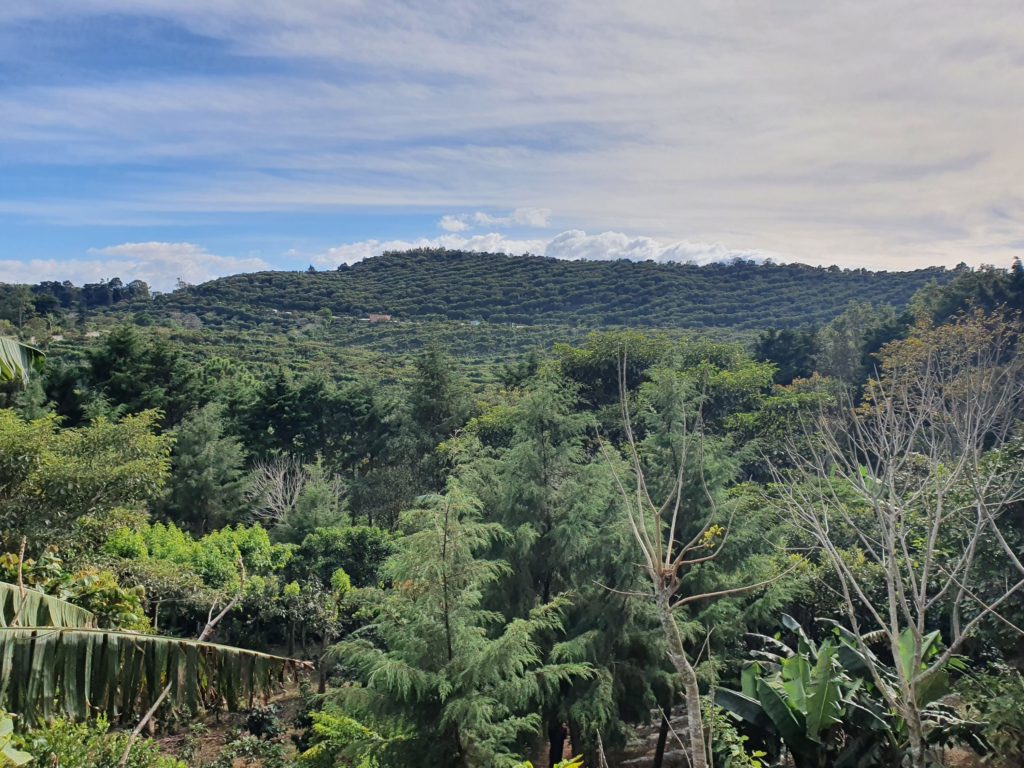
The Ruta de las Flores is also perfect to learn more about the history and culture of El Salvador. El Salvador is a country with a rather bloody past century, marked by wars. These included a prolonged civil war that did not end until 1992, as well as a war that is probably one of the most bizarre of all time. This refers to the football war with Honduras, which was actually about the rights of Salvadoran migrants in Honduras. The war lasted only four days, but cost thousands of lives.
What also happened in the last century was a genocide against the indigenous people of El Salvador. The indigenous people were severely disadvantaged in El Salvador in the 1930s, which was at that time ruled by an elite consisting of several families. When the indigenous people called for an uprising, thousands of them were slaughtered.
Today, the Indians still make up a minority in the population of El Salvador. Many of them live in Ahuachapán, one of the towns on the Ruta de las Flores. For this reason, there is also a small museum next to the main square that commemorates the crimes committed against the indigenous people.
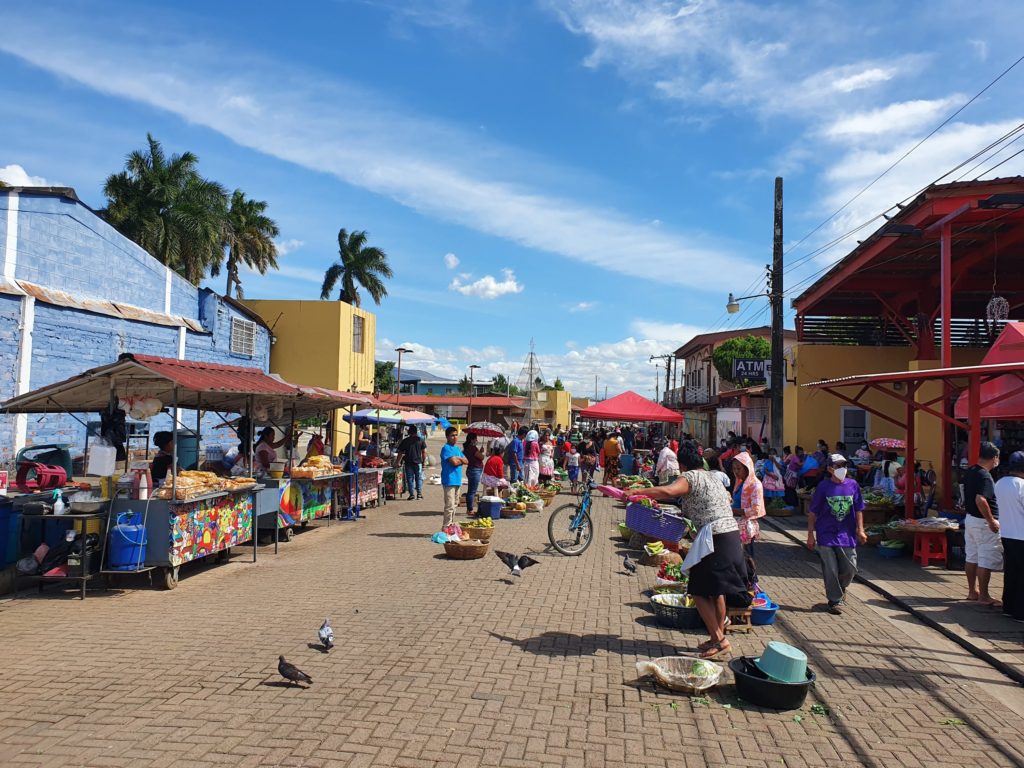
The Ruta de las Flores is probably the best tour to see as much of El Salvador as possible in just one day. I can definitely recommend this tour, although I did not see any flowers on the “flowers route”. It was simply too dry for that during my time in El Salvador.
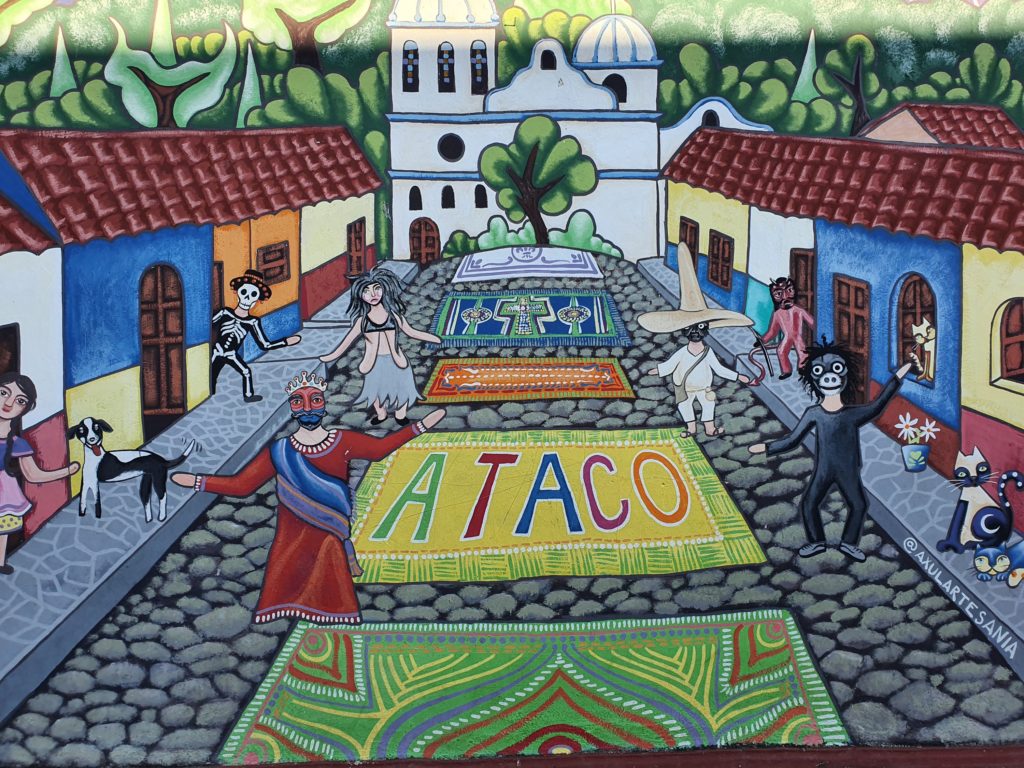
El Boquerón
Do you remember how many active volcanoes El Salvador has? Correct, there are 6. One of them is located next to the capital city San Salvador and has the potential to destroy the city. The last eruption occurred in 1917.
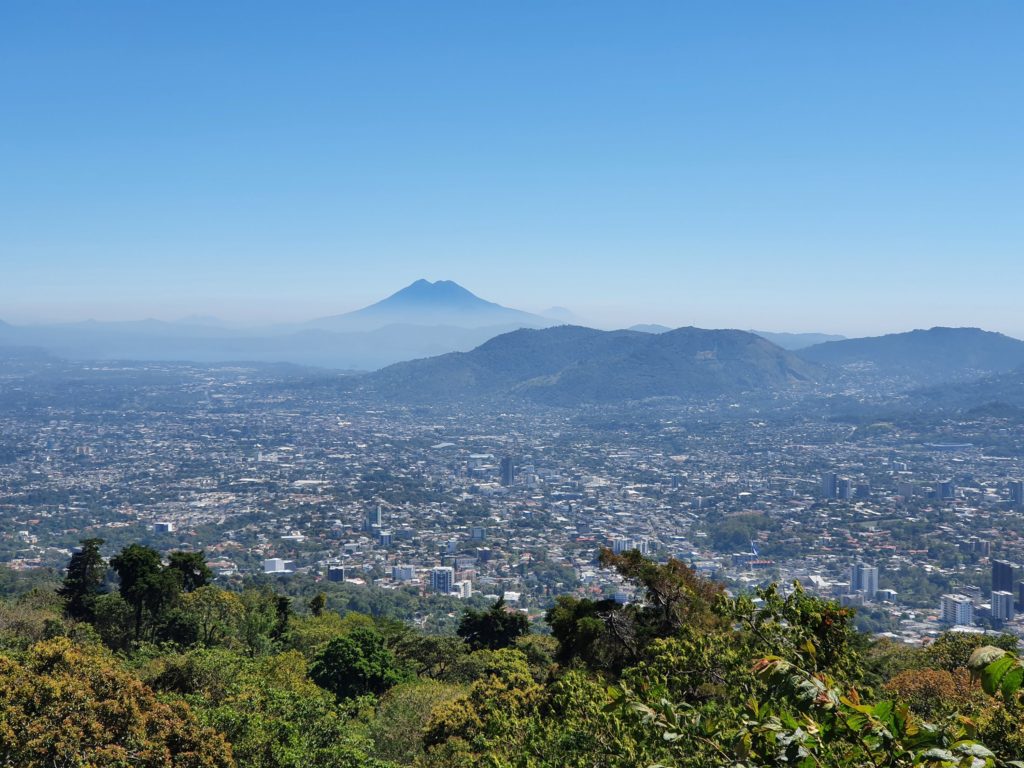
Unlike Santa Ana Volcano, it does not require a hike to see El Boquerón’s crater. You drive up by car and then have to walk for about ten minutes, which is more like a stroll than a hike.
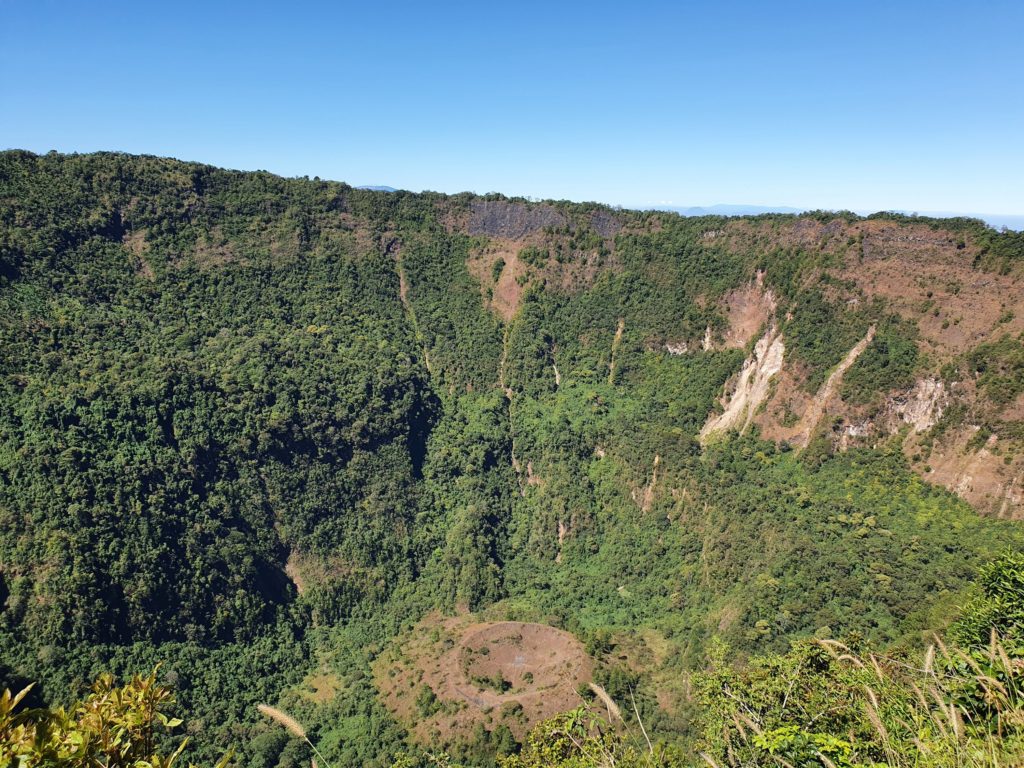
Another difference to the Santa Ana volcano is that the crater is not a green sulfur lake but a forest. By the way, it is possible to climb down and up the crater. The activity usually lasts a day.
Despite the proximity of the volcano to the city, there is no evacuation route in San Salvador. Moreover, there are only three volcanologists in the entire country, who are supposed to ensure the safety of the people. That does not really sound reassuring, if you ask me. Let’s hope that the volcano will take a while until the next eruption, so that San Salvador is not doomed.
It goes without saying that visiting El Boquerón is not as spectacular as hiking the Santa Ana volcano. However, it was a nice attraction on the way from Santa Ana to San Salvador. You can also visit it as a two to three hour trip from the capital.
The cities: San Salvador and Santa Anta
I would be lying if I called San Salvador an exciting city. The city is huge and offers relatively little – apart from the terrible traffic. However, since the capital has the only airport in the country and is also a hub for buses bringing travelers into the country from neighboring countries, it is practically impossible to avoid the city.
Following the El Boquerón volcano, I toured the capital, seeing all the sights in about two to three hours. Most of these sights are located around the three main squares in the city center.
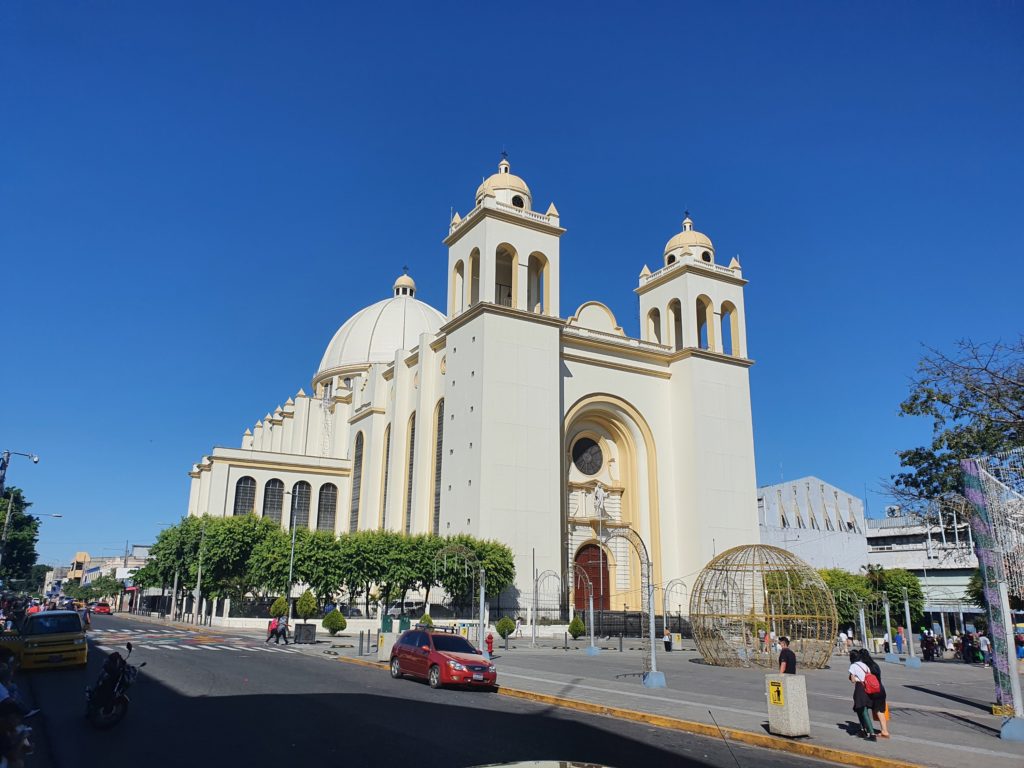
Nonetheless, San Salvador has one of the coolest attractions I could see in El Salvador. And that was this church…
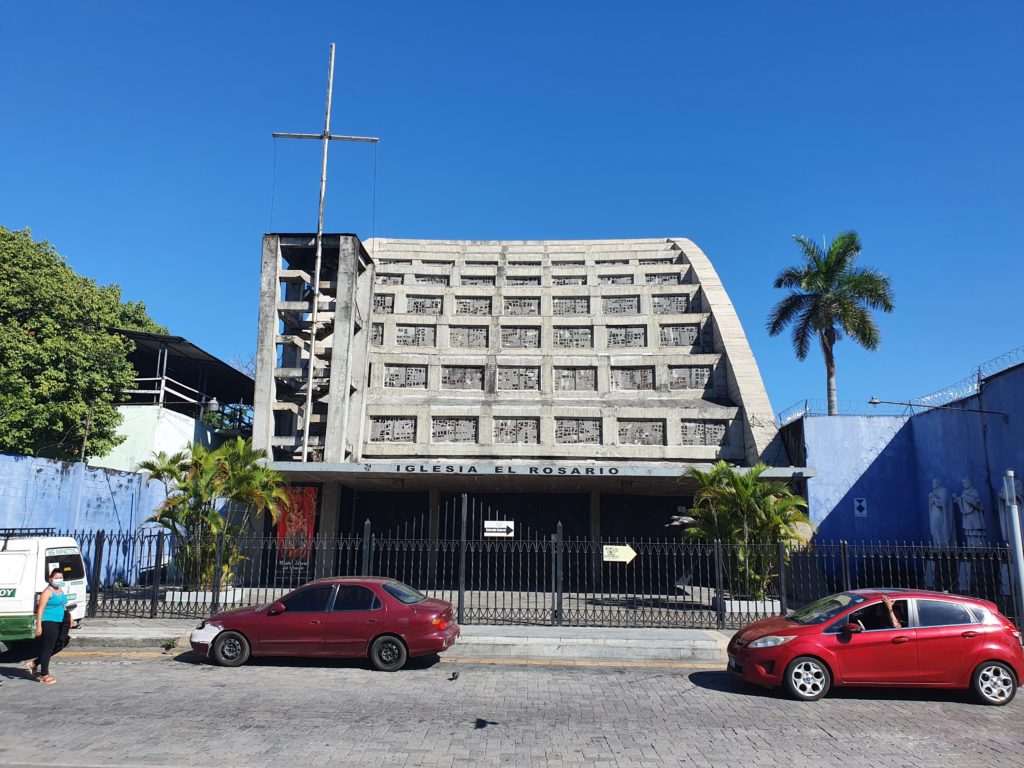
From the outside, the church does not look particularly beautiful, even rather ugly. But you should never judge a book by its cover, because the church is an architectural masterpiece. The best time to visit this church is in the morning or afternoon. Then the sun shines through the windows with their colored glasses, so that the church comes in different colors.
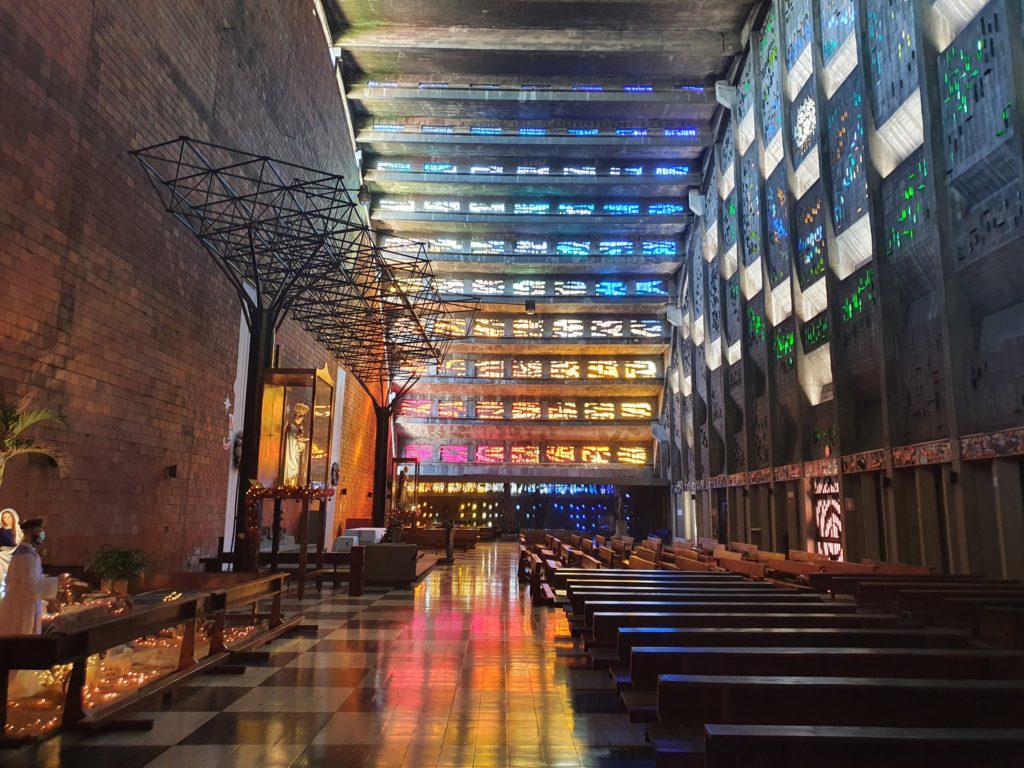
When the architect of the church, Rubén Martinez, showed his design to the authorities of the church of San Salvador, they were appalled. Such a modern church would have no place in Catholic El Salvador, was their reaction. As a result, Martinez traveled to the Vatican, asked for permission, and received its blessing to build this church. Thus, the authorities could no longer veto it.
Although I am not even a person who is interested in seeing religious buildings from the inside, this church was my second-most favorite sight in El Salvador after the Santa Ana Volcano. The church is simply stunning and one of the most beautiful buildings I have seen. At least from the inside. Even if San Salvador did not become my favorite city, the Iglesia el Rosario alone was worth the visit.
Santa Ana, on the other hand, was a much more pleasant town. El Salvador’s second largest city was more like a large village, cozy and laid back. Santa Ana also has a pretty nice downtown with colorful architecture and delightful churches.
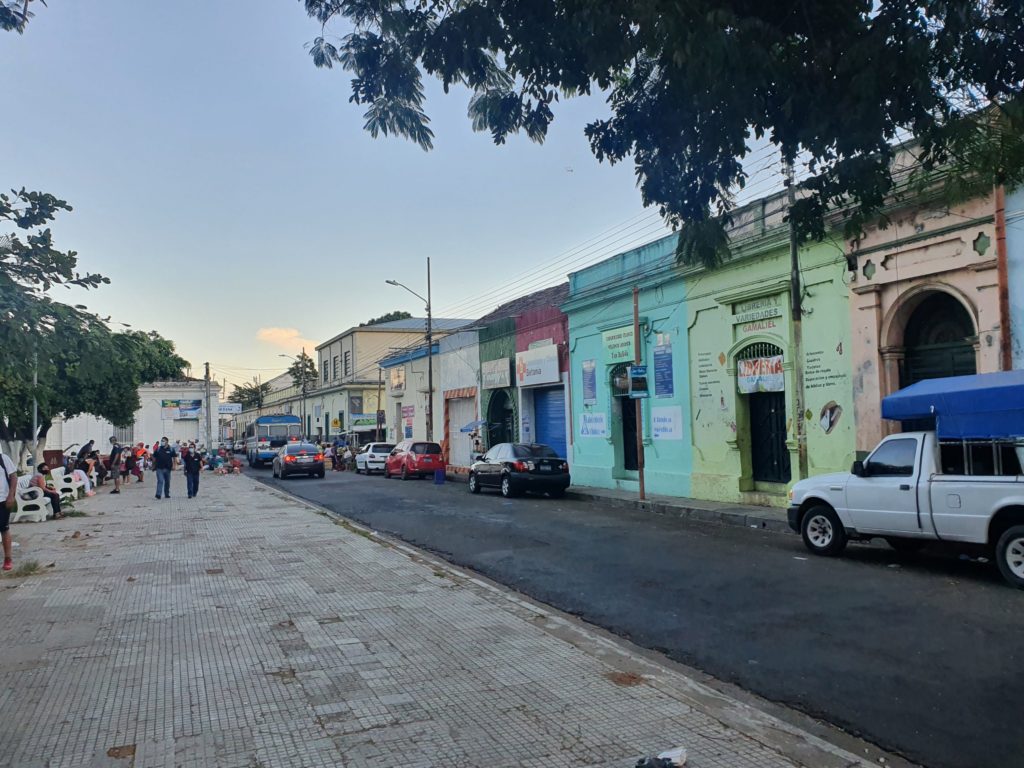
Nevertheless, there are pros and cons to both cities when it comes to choosing your base in El Salvador. Santa Ana’s advantage is that it is definitely the nicer city and you are not exposed to the traffic of San Salvador. San Salvador’s advantage, on the other hand, is that the restaurant scene is much better (I could not find a lot of great restaurants in Santa Ana) and it is closer to the airport.
Suchitoto and Lake Ilopango
After first taking a boat ride on Lake Ilopango, the largest lake in El Salvador, I spent my last afternoon in El Salvador in the Japanese-sounding town of Suchitoto, which is about a 90-minute drive from San Salvador.
Suchitoto is perhaps the most beautiful colonial town in El Salvador. Or at least the most beautiful I had seen. The center has many colorful houses and of course also a main square with a park and a church. Thus, you can easily spend one or two hours wandering through the beautiful alleys of the city.
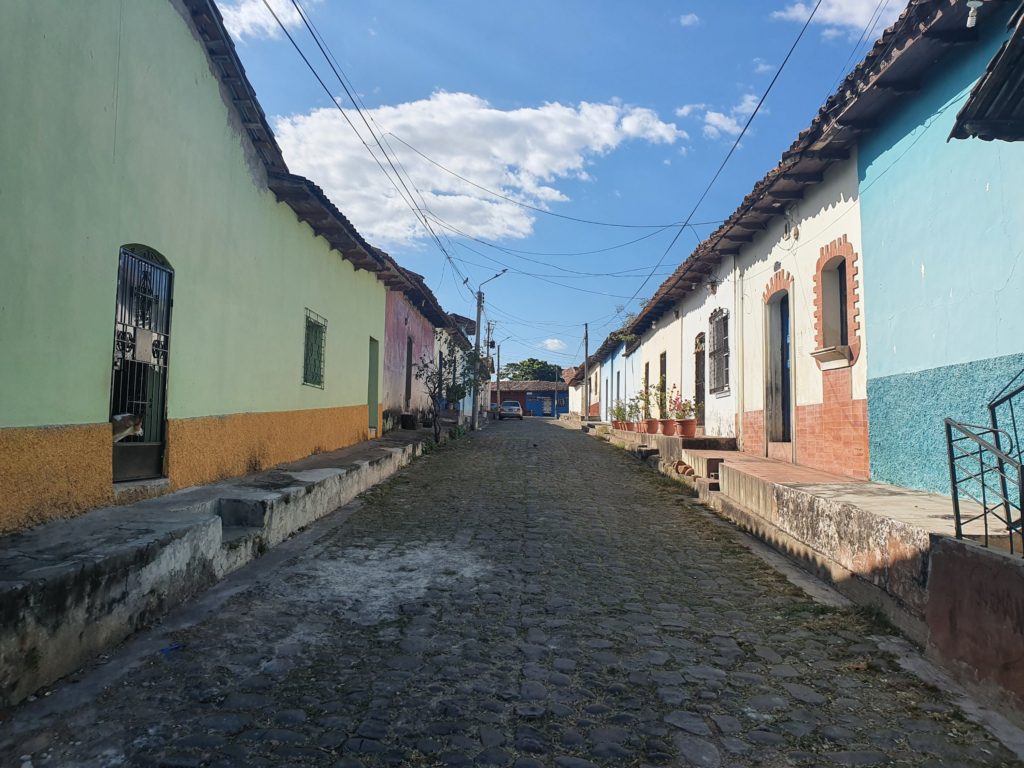
Suchitoto was not the only place we visited on that day. We also went to the Los Tercios Waterfall, located just a few minutes by car from Suchitoto. In the dry season, it is rather an interesting rock formation to see here but still worth a visit.
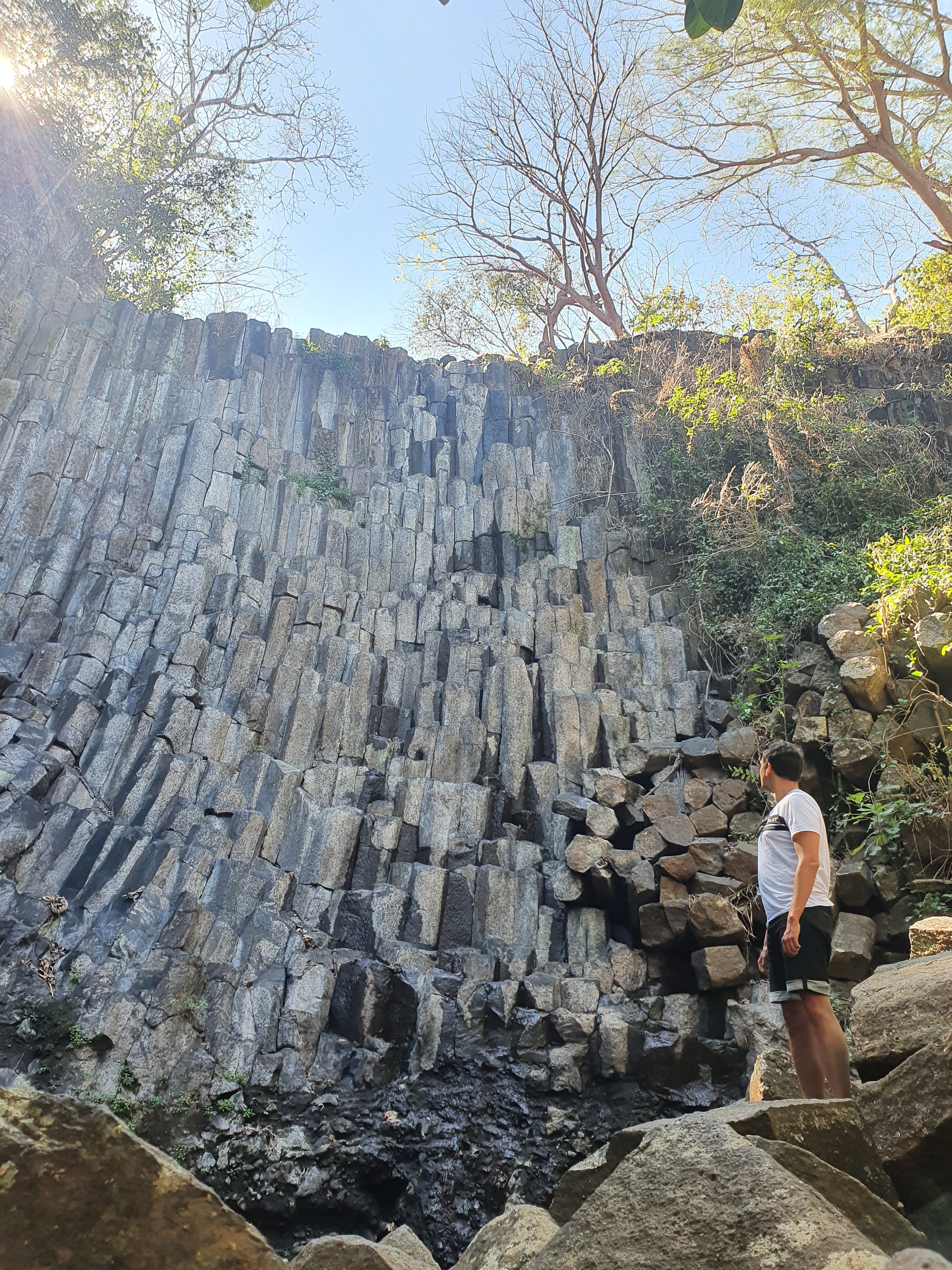
Apart from the fact that the temperatures were unbearably hot, Suchitoto was a very beautiful place. However, if someone with only three days in El Salvador were to ask me which place I would most likely cross off my itinerary, it would probably be Suchitoto. The colonial towns of the Ruta de las Flores would have been enough for me.
However, I don’t want to complain, after all, I still saw Lake Ilopango and Los Tercios waterfalls that day. All in all, it was still a great tour.
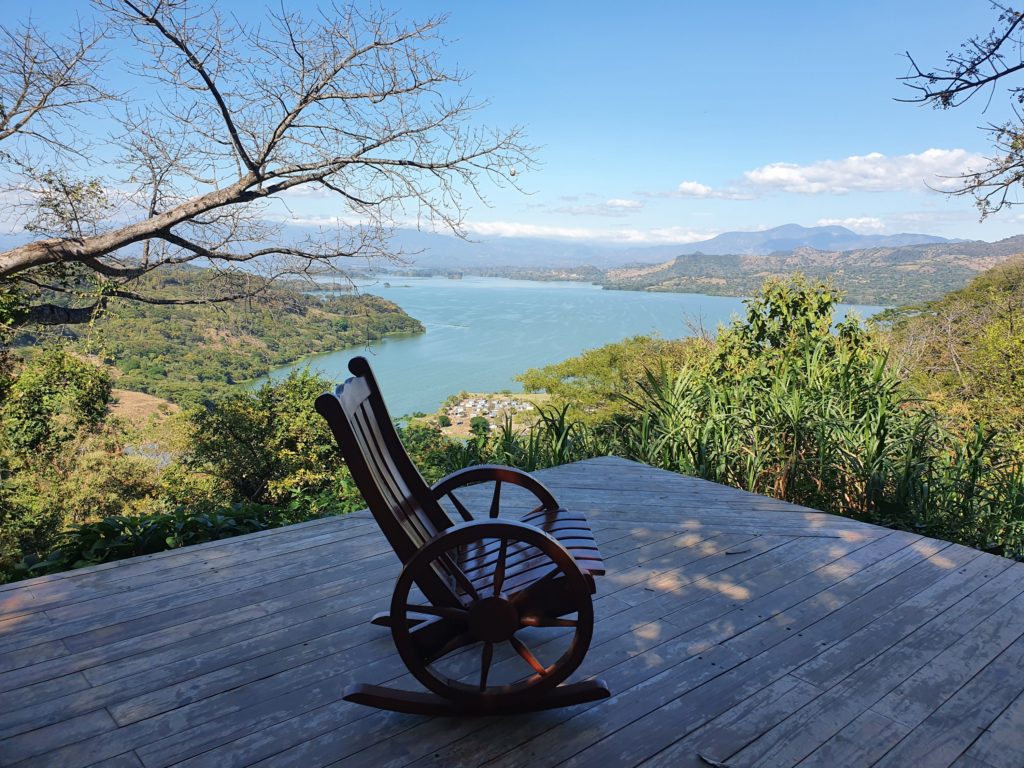
Is El Salvador safe?
Now that I have listed all the places I visited, the essential question is: is El Salvador safe for travelers? My answer to this is quite clear: yes!
When I was in Haiti in November 2020 and named this country in an Instagram story as the second most dangerous country after Venezuela in the Western Hemisphere, the protest was not long in coming. Some asked why I didn’t include El Salvador and Honduras, so I added a disclaimer in my blog post that these two countries might be equally dangerous as Haiti.
Now that I have been to El Salvador, I can only say that El Salvador is not more dangerous than other Latin American countries such as Ecuador or Colombia. Of course, you have to be careful, especially at night, because robberies happen from time to time. However, I would call the risk low if you act according to common sense.
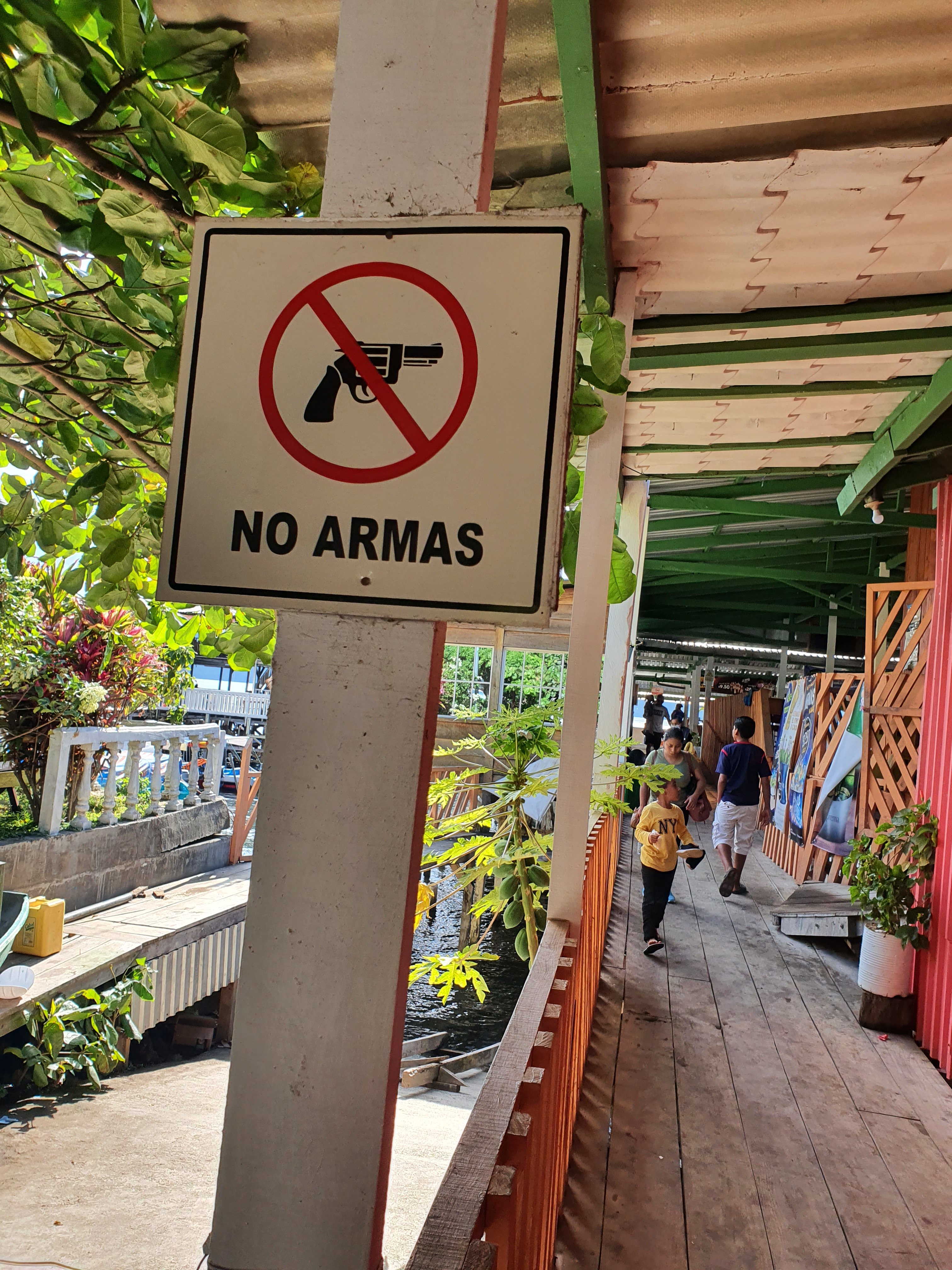
Some of you might think now ‘sure, you were traveling with a guide and driver. It’s easy to say that the country is safe.’ I have to disagree, though. Even without a guide, I would describe El Salvador as a pretty safe travel destination for tourists and I would say that you easily travel El Salvador on your own.
While I was always accompanied by my guide during the day, I was alone every day in the late afternoon and evening. During this time, I walked alone through the cities after sunset in both Santa Ana and San Salvador and never felt the least bit unsafe. Santa Ana had a pretty provincial character and I stayed in Zona Rosa in San Salvador, a safe and touristy neighborhood. However, according to my guide, downtown San Salvador is now also quite safe and you could walk around after dark without getting problems.
So how do the high murder rate and my assessment that El Salvador is safe fit together? The simple answer is that the high crime rate in El Salvador still exists, but as a tourist you are not an interesting target for the gangs. They fight each other over drug or weapon deals and this takes place in parts of the country that you do not see as a tourist anyway. So the most I would worry about in El Salvador is having my wallet stolen. Just like it can happen in Prague. Or in Rome. Or in Barcelona.
Some tourists also abuse their trip to El Salvador to be praised afterwards as particularly brave and courageous by their friends or followers. For example, my guide Stefy told me that she had an Australian Youtuber on the free walking tour in San Salvador. Although Stefy told the guy that all the areas they visited were absolutely safe, he posted a video of the market in downtown after his trip. The video had the title ‘the most dangerous market in the world’.
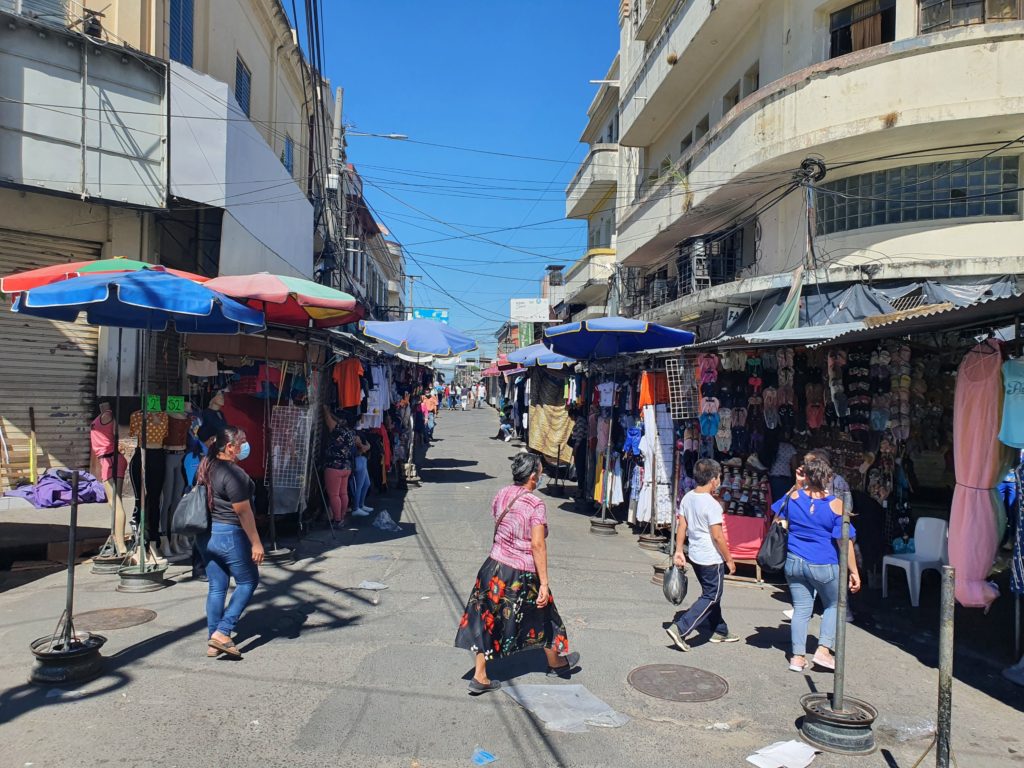
So, long story short: if you dare to travel to countries like Ecuador, Colombia or Brazil, you should not be afraid of El Salvador. I would rate Brazil in particular as a much more dangerous country, because unlike El Salvador, violent crimes happen there even in the tourist zones like Copacabana. And I have never met anyone who refused a trip to Brazil because it was too dangerous there. I would also classify Haiti as much more dangerous than El Salvador without hesitation.
Why you should not skip El Salvador
Admittedly, my start in El Salvador was difficult. Due to the Corona pandemic, El Salvador requires a negative PCR test upon entry, which I had with me. However, my trip to Cabo Verde caused problems, although it was already three and a half weeks ago.
Because of the virus mutations from Great Britain and South Africa, El Salvador prohibits the entry of travelers who have been in these two countries in the last 30 days. So far so good. However, the nice lady at the passport control said that this rule applies not only to South Africa but also to the neighboring countries. My argument that Cabo Verde is further away from South Africa than El Salvador is from Canada did not impress her.
In the end, I discussed for two hours at the airport with the border control and asked several times where I can find this rule that the whole of Africa is affected by the entry ban. Nobody could show it to me and the reason is that this rule simply does not exist. For the lady, Africa seemed to be a country instead of a continent. Finally, I was allowed into the country, but this is another example of the difficulties that traveling during the pandemic brings.
However, that was my only bad moment in El Salvador, because I thought the country was great. In four days I was able to see all the things I wanted to see. If I had another day available, I would have gone to the Reserva Natural El Imposible. Or I would have visited El Tunco beach on the Pacific coast.
One of the biggest strengths of El Salvador is certainly the size of the country, which allows you to see quite a lot of things in a short time. The roads are also in good enough condition that you can get from one place to another relatively quickly. As a bonus, you can always stop at a café with a spectacular view and enjoy a local coffee.
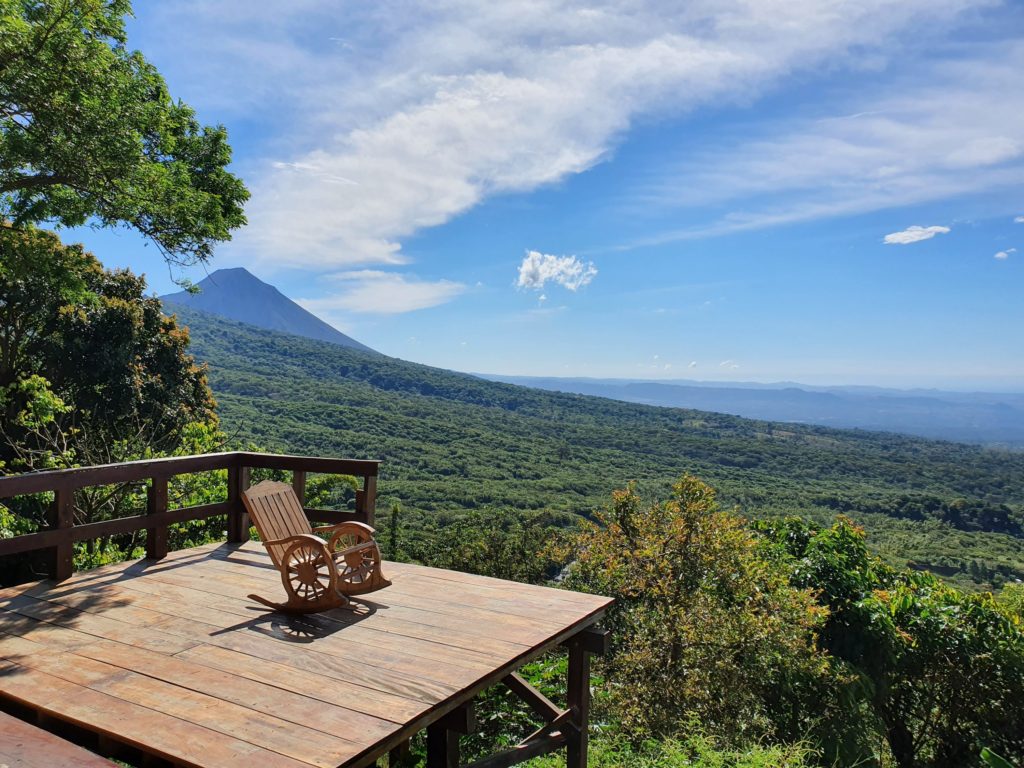
I found the price level in the country to be reasonable. For my mid-range hotels I paid on average about 50-60 dollars, although budget hotels are also available for 5-15 dollars. A 10 minute Uber ride cost 2 dollars. For food I usually paid around 10-15 dollars. Admittedly, I usually chose the better restaurants. So this should not be a reference.
Having said all that, I can recommend everyone to visit El Salvador on their Central America trip. The country, contrary to popular belief, is not unsafe, the people are nice and there are many great things to see. And if you need a good and professional guide, you will find it at EC Tours El Salvador.
